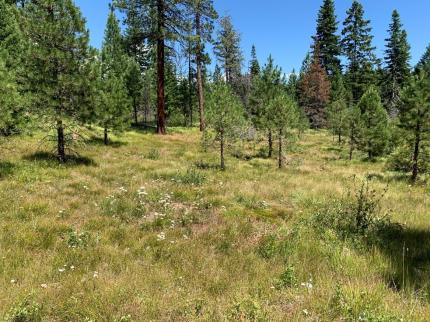
Wildlife Program report: Jul. 16-31, 2023
Providing Conflict Prevention and Education
Partnership Coordinator Browning and Recreation Planner Andersen continue to manage the TREAD (Trails, Recreation, Education, Advocacy, and Development) contract. All re-routes have been completed and are ready to be sent off for Cultural Resource review. TREAD will now write a report detailing findings, methods, and recommendations for Quincy Lakes trails.
Browning and Andersen continue to support two interns, one in the Methow Wildlife Area and one in the LT Murray Wildlife Area, as they conduct trail inventories using the Field Maps App.
Conserving Natural Landscapes
Skagit Wildlife Area: The draft wildlife area management plan was submitted to the tribes and the Wildlife Area Advisory Committee separately on July 24. The Washington State Department Environmental Policy Act (SEPA) 30-day process is expected to begin by early September. A public workshop has been tentatively scheduled for Sep. 5 at Padilla Bay. Staff members received comments from the Wildlife Diversity Advisory Committee in July.
L.T. Murray Wildlife Area: The final draft wildlife area management plan was submitted for SEPA review in mid-June, which ended on July 14. Planning team staff members are responding to comments prior to final internal review. The plan will undergo final graphic design by Communications and Public Engagement (CAPE) prior to signature by Director Susewind in August.
Cowlitz Wildlife Area: A public scoping open house and field trip was conducted in early July for the draft wildlife area management plan. The planning team is working with CAPE and our social scientists to develop a recreational survey to gather data on use preferences and demographics on the wildlife area.
Violet Prairie Section 6 Management Plan: The draft Violet Prairie Section 6 Management Plan (unit of the Scatter Creek Wildlife Area) was submitted to the United States Forest Service (USFS) on July 20 for their initial review and feedback. This plan includes measures for the Mazama pocket gopher, Taylor’s checkerspot butterfly, western gray squirrel, Oregon vesper sparrow, and streaked horn lark.
Kiosks: Browning is working with CAPE to design and order kiosks for regions 2, 4, and 6. Kiosks will include regulatory and warning signs intended to protect visitors and wildlife.
Teanaway Community Forest: Range Ecologist Burnham conducted periodic monitoring, similar to the monitoring conducted for the last several years, and notified the grazing technical team of the results. This season is the first under a new Department of Natural Resouces (DNR) lessee and adjusted grazing plan, so it will be interesting to observe any differences.

LT Murray and Asotin Creek Wildlife Areas: Range Ecologist Burnham conducted ecological integrity monitoring at permits areas located on the LT Murray and Asotin Creek wildlife areas.
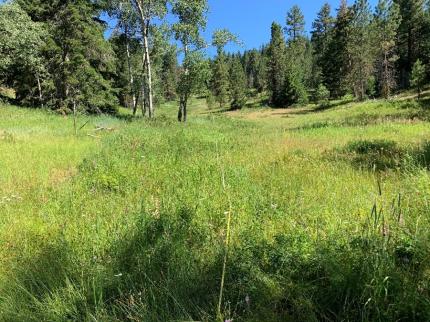
WSU Stocking Rate Tool: Burnham helped beta-test and comment on a dynamic stocking rate tool being developed by Washington State University Extension.
Weed Control:
- Spartina (0.021 acres treated, 32.5 acres surveyed)
- Yellow flag iris (0.025 acres treated, 14.5 acres surveyed)
- Japanese knotweed (0.03 acres treated, 3.66 acres surveyed)
- Invasive cattail (0.03 acres treated 3.8 acres surveyed)
- Blackberry and Scotch broom treatment at Grayland site
- Surveys throughout Willapa Bay area, showing good control, with very little found
- Treatment of knotweed at Grays Harbor Public Utility District site, under contract
Controlled Burns in Western Washington Wildlife Areas in July 2023: The drier than normal winter and spring in Western Washington inspired Scatter Creek Wildlife Area managers to consider early summer controlled burns. They reached out to district biologists and the prescribed fire team to discuss the feasibility. In years past, prescribed fire was used in the fall, but with forecasted El Nino conditions, there is a worry that the fall burning period will be quite short.
“There is a window of opportunity between too dry and too wet to complete prescribed burns,” says Prescribed Fire Planner Edwards. “Add on top of that, crew availability and an extensive amount of pre-burn work and there is not much time in hot years like this one to use fire as a restoration tool.” The consensus from the group was that burning in July was a good goal.
In July, WDFW and Ecostudies Institute burned three units in two days, two units at West Rocky Prairie and one unit at Scatter Creek. West Rocky Prairie burns targeted Taylor’s checkerspot butterfly habitat. The Scatter Creek burn was an oak site, which was logged after the 2017 wildfire. The intended ecological effects were achieved, the fire cleared out logging debris under the oaks and Scotch broom and other invasive species on the prairie.
The burn was a collaboration with input from multiple groups. The Scatter Creek Wildlife Area managers developed the plan and organized pre-burn planning, unit prep work, provided funding, and gathered the crew. District biologists assessed the site for impacts to wildlife and the prescribed fire team provided insight into fireline development and tactics to produce desired fire effects. The Chehalis Tribe added cultural insight and support for fire returning to the landscape and the Ecostudies Institute provided resources and equipment. Department of Natural Resouces enthusiastically permitted the process during a regional burn ban. The burns were met with support from the surrounding communities.
The burns provided training for WDFW and Ecostudies personnel, including Burn Boss Trainee Edwards. Prescribed fire is becoming a more commonplace and necessary tool in our state and providing a safely trained, highly capable workforce is a huge aspect of returning fire to the landscape. These skills can be applied during wildfire response, making prescribed burning a useful tool for all wildland firefighters.

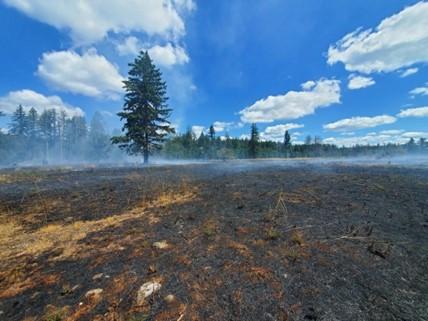
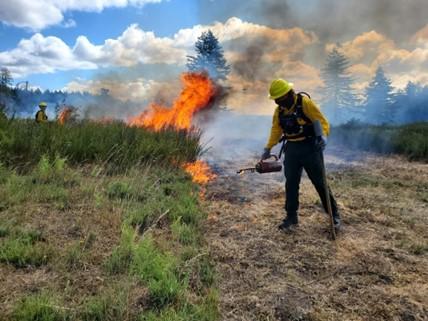
For future South Sound planning, there are only two units left at Scatter Creek Wildlife Area that can be burned in these dry conditions, neither of which are Taylor’s checkerspot units. This makes the two units we burned at West Rocky Prairie earlier this month even more impressive and will hopefully relieve some of the pressure for the post-rain burn lineup.
Other areas across the state are also in the planning phases for prescribed burns to reduce hazardous natural fuel loading and improve habitat. This includes a small burn in the Long Beach area to help rebuild the Oregon silver spot butterfly habitat by reducing vegetation that is restricting native plants that help feed and support the butterfly population. In Eastern Washington, burns are being planned for implementation this fall and next year to reduce natural fuel loading created from timber harvests and decades of natural vegetation buildup that would add to wildfire devastation but will improve big game habitat.
Prescribed fires are conducted when weather and fuel moisture conditions allow fire specialists to conduct the needed operations at low fire intensities and reduce the vegetation buildup. When burns are conducted in conjunction with timber thinning operations, forests are restored by removing crowded and unhealthy trees. This helps them survive wildfires much better. Burning will reduce the thinning debris and replace nutrients back into the soil allowing needed forage to grow such as grasses and shrubs that support wildlife.
Forest Thinning:
Work in Colockum Phase 1, 863 acres, has started. Because of potential safety issues with a bridge in LT Murray Wildlife Area, the contractor has turned both of their crews to Colockum Wildlife Area and has been proceeding with work there at an increased pace. Work is anticipated to stretch into 2024.
Thinning in LT Murray Wildlife Area, approximately 588 acres, is delayed due to the safety inspection of a bridge, which would be used by trucks hauling logs. The Forest Health Program has been working with Capital and Asset Management Program (CAMP) and others to resolve the issue. As of end of the month, Scientist Tveten reached out to colleagues in the Department of Transportation and obtained steel plates for the bridge that will allow the project to proceed. The work is anticipated to start the second week of August. Tveten’s knowledge and contacts saved the Department at least $5,000 and resolved this issue quickly. Longer-term, we need to determine who “owns” the bridge, when it may need to be life cycled, and potentially get it on the capital budget list. This work will be happening over time.
Thinning in West Rocky Prairie, approximately 95 acres, was initiated and completed by the end of July. This work supports cultural resources, where tribes burned and managed the area for oaks and camas for thousands of years. The project also supports oaks and a variety of Species of Greatest Conservation Need (SGCN) species. Whereas West Rocky area is a difficult spot with all the competing resources and conflicts, the forest health team has worked with Diversity and through the restoration pathway to advance this project and mitigate, where necessary.
Providing Education and Outreach
The Ambassador Program just completed its fifth week of programming this past weekend. Teanaway Junction is seeing the highest number of visitors at about 50 each weekend. Ambassadors are continuing the educate visitors on how to recreate responsibly.
Conducting Business Operations and Policy
Recruitment:
- Range Ecologist Burnham worked with Human Resources (HR) and cross-program staff members to evaluate the referred candidates and interviewed them for a Fish and Wildlife biologist position.
- Biologist Zimmerman worked with HR to recruit for crew and also for the (somewhat) recently reallocated Natural Resource Scientist.
- Forest Health Scientist Tveten and team recruited for the vacant forester position. Three offers were refused by candidates. Given the time of year, the team decided to wait until after field season before reposting. Reasons for turning down the position included location and pay.
- Section Manager Walls completed the position description for the natural resources scientist for the Ecological Assessment project. The description is currently in HR review.
State Noxious Weed Control Board: Biologist Heimer prepared and gave an overview presentation to the State Noxious Weed Control Board in Olympia about what WDFW has been doing over the last couple of years.
Oregon Spotted Frog Project: Biologist Heimer received the imazapyr soil and litter residue results from Washington State Department of Agriculture’s (WSDA) Hop & Chemical Lab. The samples were taken from plots where reed canary grass (RCG) was treated at different rates to determine efficacy. The RCG control is important in maintaining Oregon spotted frog breeding habitat. The residue sampling was done to give researchers an idea of what imazapyr concentrations had on developing embryos that may be exposed to in the treatment sites. Soil sample results were all “No Detects”. Litter samples showed an increasing concentration of imazapyr residue associated with higher application rates 242 days after treatment.
Stewardship Section Budget: Section Manager Walls completed the Public Lands supplemental package for Forest Health. This will restore $2 million in funding to bring it back to total of $6 million. Walls also completed support on spending plans for the section, as well as the Ecological Assessment project proviso that was funding in this session.
Ecological Assessment project: Section Manager Walls has worked closely with Lands Division Manager Wilkerson, Lands Planning and Recreation Manager Sisolak, and Science Division Manager Martorello on developing the needs, questions, and first steps for the Department side of the Ecological Assessment work. They will determine, and their work feeds into, and is part of discussion with Department of Natural Resorces, Parks, and tribes on recreational impacts. The key first steps are getting a handle on the existing tools to evaluate ecological integrity, such as the Natural Heritage Program’s Ecological Integrity Assessment, and also to outline WDFW’s needs for measuring both integrity and stressors, and how that information would affect things, like planning, operational, and stewardship activities.
Managing Wildlife Populations
Tucannon Bighorn Sheep Herd: Wildlife Area Manager Dingman located the Tucannon bighorn sheep herd this week and found all 12 sheep, including 3 lambs, that make up the majority of the herd.

Chronic Wasting Disease: Dingman sampled a roadkill white-tailed doe along Patit Road on one of her morning commutes this week. Dingman contacted the new owners of the Last Resort Campground regarding collecting Chronic Wasting Disease (CWD) samples there again this fall. They are on-board to allow us to collect samples from harvested deer in the cooler, as hunters allow, and to set up a check station during general deer season.
Chronic Wasting Disease Operations: Natural Resource Technician Heitstuman checked local pits for CWD Samples. Local Department of Transportation (DOT) employees have noticed a drop in numbers of road kills. Heitstuman discussed DOT participation and tag supply with District Biologist Wik.
Chronic Wasting Disease Sample: Natural Resource Technician Harris collected a CWD sample from a roadkill deer in GMU 117. Natural Resource Technician Janowski collected a CWD sample from a deer in GMU 121. The deer had been struck by a vehicle and survived but was euthanized as a result of the injuries.
Providing Recreation Opportunities
Trail Clean-up: Wildlife Area Assistant Manager Palmer and Natural Resources Technician Zueger spent the morning of July 20 clearing pinecones off the hiking trail along the Columbia River, between Sherman Creek Headquarters and Haag Cove to the south. They used a motorized “flapper-wheel” attachment on a weed whacker pole, that pushes the cones off the route of travel.
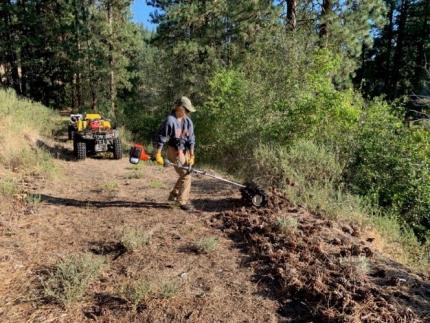
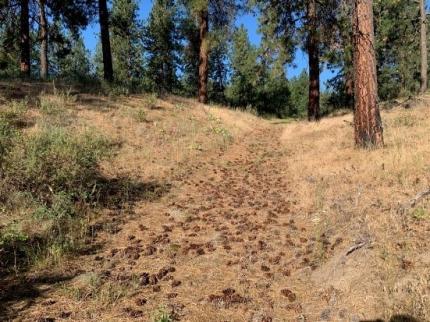
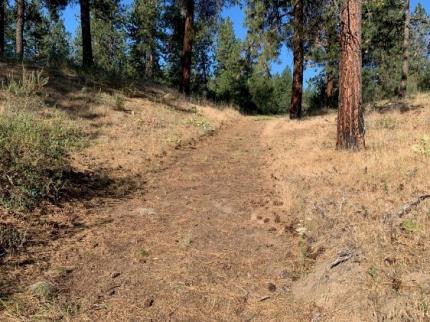
Access Program: Acting Private Lands Biologist Nizer corresponded with the Turnbull Wildlife Refuge about the upcoming contract for 1,800 acres on the refuge that would provide turkey hunting in the Hunt by Reservation program. The contract is in the hands of the United States Fish and Wildlife Service (USFWS) and should be ready for signatures in the coming weeks.
Cooperative Road Management Agreement: Natural Resource Technician Harris visited several timber parcels enrolled in the Cooperative Road Management Agreement (CRMA) program and checked for proper signage and recreation activity.
Recreation Access Closure: Natural Resource Technician Janowski coordinated with Communications Specialist Lehman to relay information to other WDFW staff members regarding private and industrial timber access closures. Several timber companies who typically allow public access had decided to close lands due to the fire danger. A timber company in Stevens County is participating in this closure.
Grande Ronde River Access Sites: Heimgartner and Nielsen graveled one of the driveways at the Faha access site. They hauled two, three dump trailer loads of rock on the road and smoothed it with their John Deere tractor and land plane.
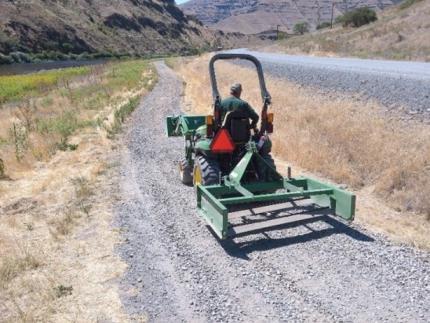
Horseshoe Lake Jersey Barriers: Earlier this year, someone hit the concrete jersey barriers at the Horseshoe Lake access area with a vehicle. One barrier was dislodged from its position, another was dragged into the driveway that leads to the parking area, creating a hazard for visitors’ vehicles. This week, Sherman Creek Wildlife Area and water access area staff members coordinated to remedy the situation using a mini-excavator, truck, chains, and hand tools. A line of jersey barriers separated the county road from the access area parking lot, but they were originally set haphazardly with large gaps in between. Rather than just moving and turning the dislodged barriers upright, the four employees reinstalled them correctly. Wildlife Area Assistant Manager Palmer used the mini-excavator to move the barriers out of the way so the team could prepare the ground. As Palmer pushed gravel out of the way, Natural Resource Technicians Brant and Zueger used hand shovels to flatten the site. Once the prep work was done, the dislodged barriers were righted and installed properly. With a deft touch, Palmer got all the barriers set back in place, bumped up against each other and straight. This reduced the length the row that stuck out too close to the entrance of the access area by the length of one barrier. The shorter row should help prevent anyone from running into them in the future as they turn into the parking area. Having them linked together will reduce the chances of damage from barriers being pushed into parked cars or being left in the middle of the driveway if they are hit again. This repair is a great example of different work groups joining to get a big job done.
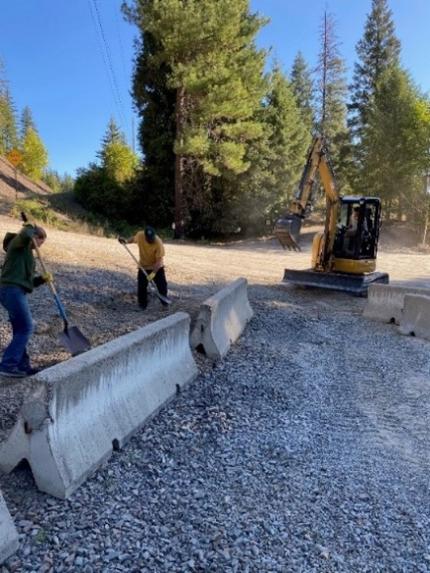
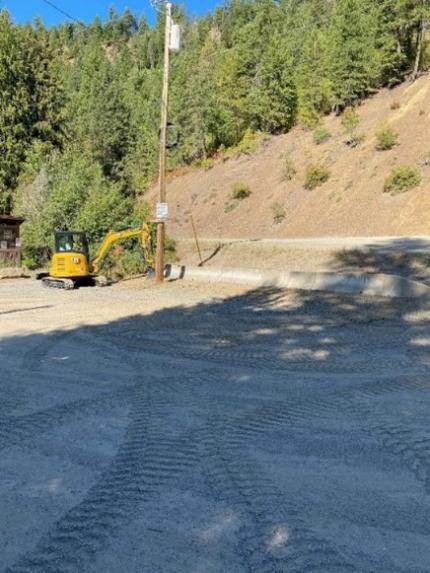
Providing Conflict Prevention and Education
Bear Trap: Wildlife Conflict Specialist Kolb picked up a new bear trap and capture tarp from the Wenatchee office.
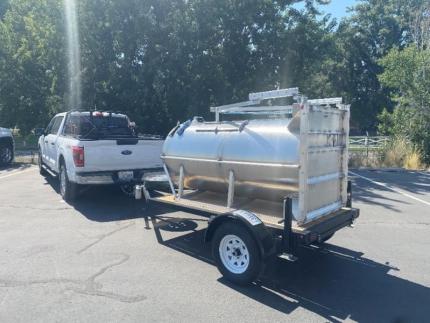
Conserving Natural Landscapes
Asotin Creek Wildlife Area Spalding Catchfly Surveys: Woodall and the University of Idaho interns recently completed eight Spalding catchfly surveys for the year. There are two more to go, that they can finish next week.
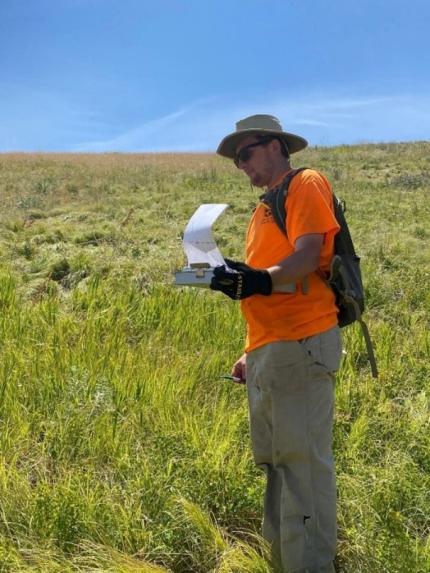
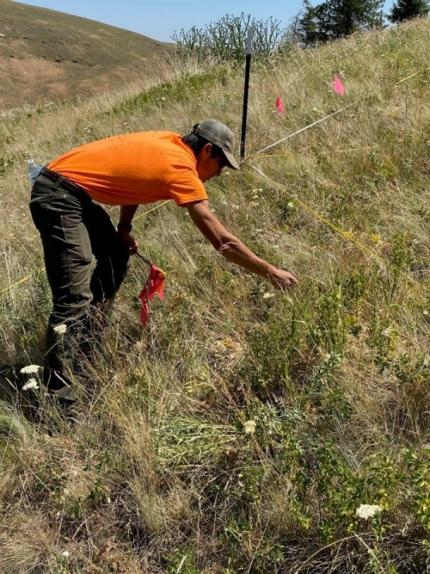
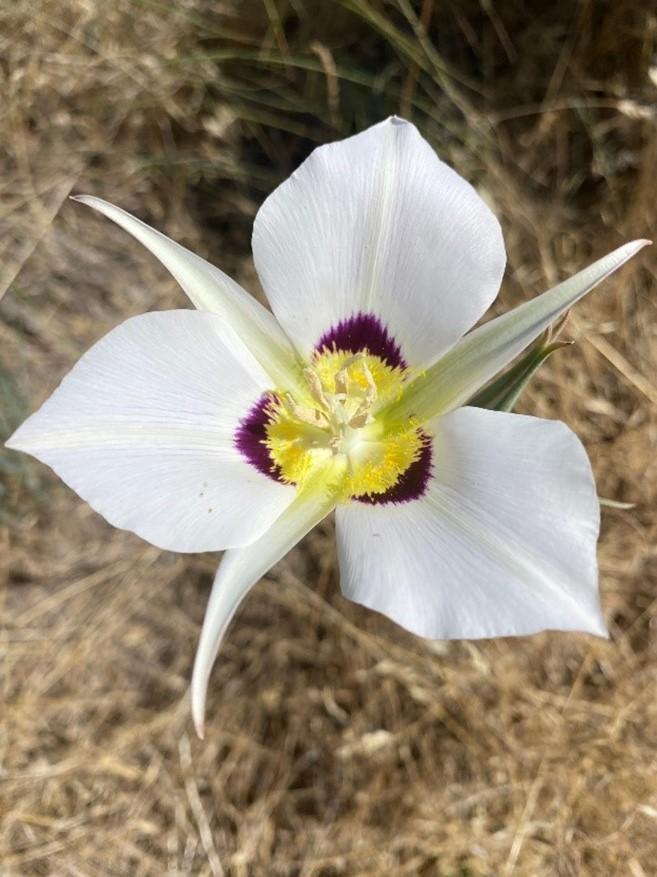
Reardan Audubon Access Work: Access Manager Dziekan and Natural Resource Technician Brant painted the parking areas on the access sites.
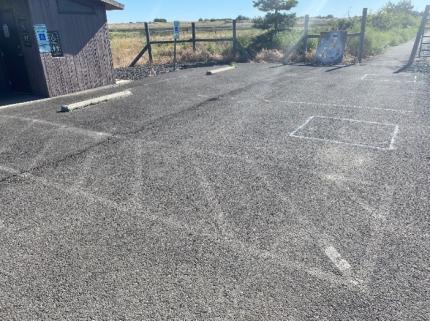
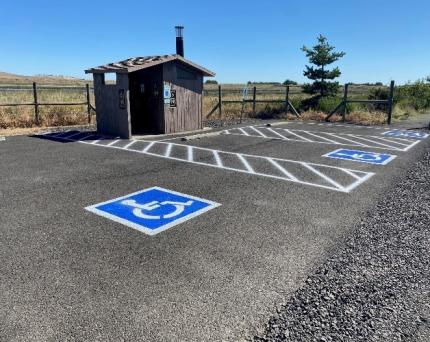
Habitat Site Evaluation: Acting Private Lands Biologist Nizer and Natural Resource Technician Rumiser checked a 20-acre site that was seeded in spring as a cover crop to see how it looked. The landowner recently mowed it, but everything looks like it grew at a good rate. Site will be planted again in the fall for a pollinator crop.
Guzzler Repair: Private Lands Biologist Hadley worked with members from the Richland Rod and Gun Club to rebuild a wildlife watering facility (guzzler) roof and posts.
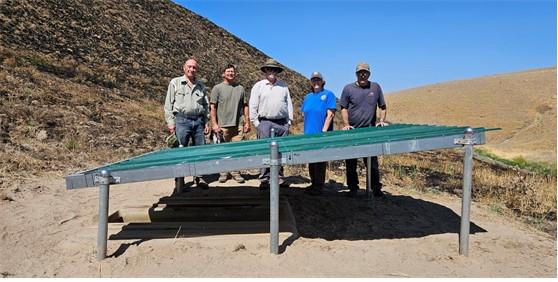
Cultural Review: Private Lands Biologist Hadley worked with WDFW Landscape Conservation Section Manager Gorrell as well as the Walla Walla Conservation District habitat planner regarding obtaining Cultural Reviews of upcoming habitat plantings projects.
Sourcing Seed and Plants: Natural Resource Technician Heitstuman conducted a field inspection on the Smoothing Iron Wildlife Area to help consider options for field food plots to support deer and elk through the winter as well as to try to keep the elk off surrounding private lands.
4-O Ranch Wildlife Area Grass Planting: Dice looked at orchard grass seeded on 53 acres on the 4-O Ranch Wildlife Area on Monday. The grass is looking good. Unfortunately, the weeds are thriving as well, and the field needs mowed as soon as possible. We are planning on moving a tractor along with a 15-foot mower from Joseph Creek to the 4-O Wildlife Area soon to mow the fields.
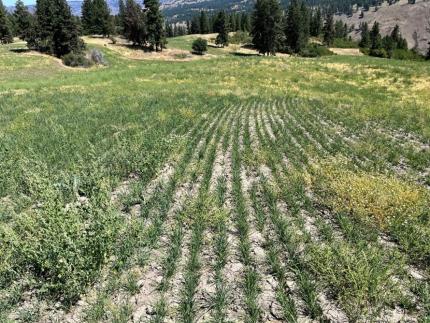
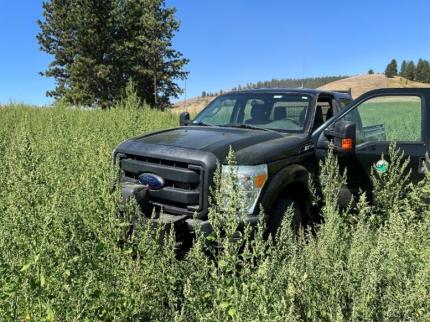
State Lands Restoration - Little Walla Walla River Restoration Project: Wildlife Area Manager Dingman started working on the United States Army Corps of Engineers (USACOE) Nationwide Permit application to obtain the necessary permits to complete the habitat restoration project on the Swegle Unit of the W. T. Wooten Wildlife Area. She also started working on the Cultural Resources desktop review request.
Providing Education and Outreach
Bear Airbnb Pamphlet: Wildlife Conflict Specialist McCarty began discussions of a guidance pamphlet of leaflet to provide Bear Aware information to Airbnb tenants in high tourism areas. This pamphlet can be provided by the property manager or owner in the welcome packet at each Airbnb location.
Wolf Presentation: Wildlife Conflict Supervisor McCanna and Wolf Biologist Roussin did a public PowerPoint presentation in Greenbluff. Biologists Lowe and Brinkman attended the presentation. The informal program provided information on the ecology and management of wolves in Washington to folks living in the area of the new Mt Spokane wolf pack. Around 80 people attended, and the information was well received.

Conducting Business Operations and Policy
Employee Evaluations: Private Lands Supervisor Earl worked on the Region 1 private lands team evaluations this week. Earl also travelled to meet with Biologist Baarstad to complete his evaluation.
Regional Meeting: Private Lands Biologist Hadley attended the Service and Regional Awards Meeting held at the Region 1 office with updates from directors and program breakout meetings.
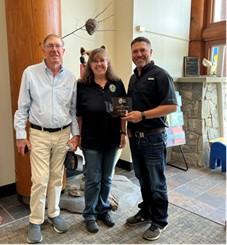
Managing Wildlife Populations
White Pelican Counts: District Wildlife Biologist Fidorra analyzed colony photos from Badger Island taken this spring in peak breeding season. The raw count which was nearly 3000 will be compared to partner survey data and finalized prior to an official estimate being published.
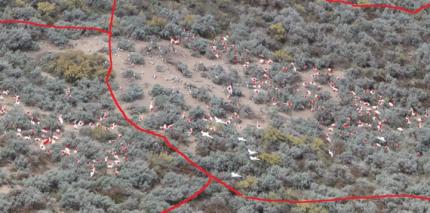
Ferruginous Hawk Management: District Wildlife Biologist Fidorra provided feedback on internal draft document related to management recommendations for ferruginous hawks.
Sunnyside Bats: Sunnyside Snake River Wildlife Area Manager Kaelber assisted other WDFW staff members and partners to sample bats at the Sunnyside headquarters. Bats were collected using a harp trap as they exited their roost box. Once trapped, bats were sampled and banded.
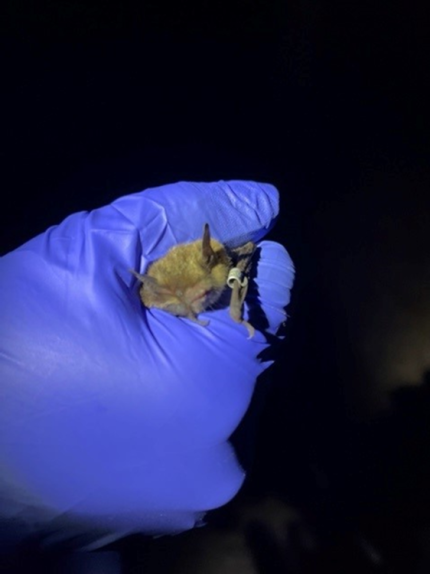
Providing Recreation Opportunities
Manastash Ridge Trail Washington Trails Association Meeting: Wenas Wildlife Area Manger Hughes and Natural Resource Scientist Frame met with members of the Washington Trails Association (WTA) to discuss possible re-routes of certain trails in the Manastash Ridges Trails area. Possible reroutes would mean better/proper grading and erosion prevention. There are several spots specifically on the Westberg Trail that are extremely steep and are eroding. The WTA had previously partnered with WDFW by conducting an assessment of the Westerberg Trail. They rerouted one section of the trail a few years ago that is holding up very well. There is still a need for future routes to be assessed to make the trails more sustainable and user friendly.
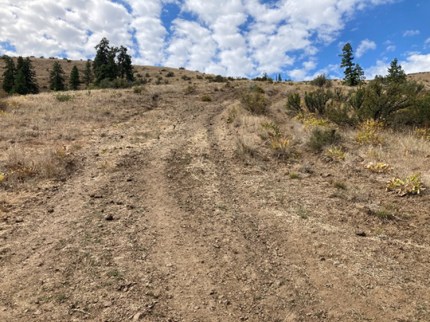
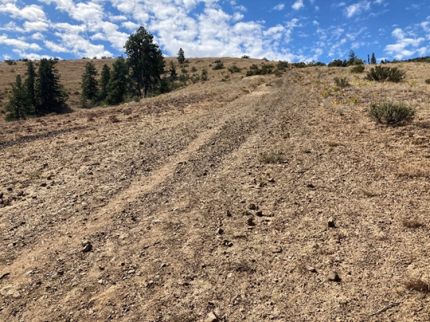
Wenas Wildlife Area Gates: Wenas Wildlife Area Natural Resource Technicians Stoltenow and Janes completed the fabrication of three gates that will be hung around the wildlife area. One gate was installed at the entrance to Hessler Flats and one was installed near Newlands Road. The final gate will be installed at the entrance to the Mellotte office.
Providing Conflict Prevention and Education
Rattlesnake Hills Elk: District 4 Wildlife Conflict Specialist Hand continued to monitor elk activity and haze elk out of winter wheat crops near the Hanford National Monument. Late night-early morning hazing patrols will continue by landowners and Hand. Wheat harvest is in full swing, and with added human presence and disturbance from heavy harvesting equipment, elk have been less frequent in crops during daylight hours.
Corral Canyon Wheat Harvest: District 4 Wildlife Conflict Specialist Hand worked with wheat harvest operations to document crop damage impacts from Hanford elk. Many of the fields are yielding near or above average bushels per acre. Heavy elk damage was observed in fields adjacent to the Hanford National Monument or areas where access to hazing was difficult.
Silver Dollar Elk Damage: District 4 Wildlife Conflict Specialist Hand received a new complaint of elk damage at a alfalfa hay operation in north Benton County. Damage Prevention permits were issued and will be utilized after Landowner Permit holders have either had an opportunity or harvested an elk.
Franklin County Hawk: District 4 Wildlife Conflict Specialist Hand received and responded to a report of a hawk that was entangled in some twine on a pole near Ice Harbor Dam. Fortunately, before arriving on scene, the hawk was able to free itself and flew away uninjured.
Kittitas County Conflict: Conflict Specialist Wetzel worked with several hay growers who were having problems with elk in crops. Elk complaints were reported in Badger Pocket, Kittitas, Peoh Point, Parke Creek, and the Teanaway area. Two light plants were installed at one field to deter elk. Suncadia residents reported some bear issues. A dumpster in the area was not in compliance.
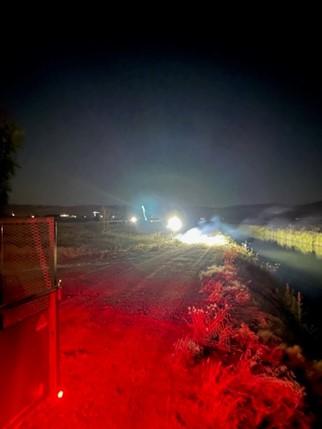
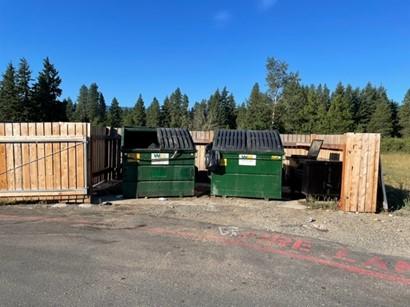
Yakima County Conflict: Conflict Specialist Wetzel worked with several hay and orchard growers who were having problems with elk in crops. Elk complaints have come from the Cowiche Road area, as well as the Naches River, and the Nile.
District 8 Depredations: Conflict Specialist Wetzel investigated several goats and sheep that had been killed by unknown predators. In another instance, two small dogs were killed by an unknown predator.
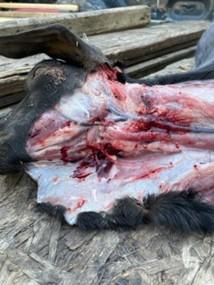
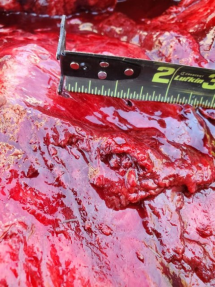
Conserving Natural Landscapes
L.T. Murray Grazing: LT Murray Wildlife Area Assistant Manager Winegeart and Wildlife Area Manager Morrison completed the first round of 2023 “landscape appearance” monitoring for the Martinez sheep crossing permit. A few hundred domestic sheep are expected to cross the L.T. Murray Unit on their way to a Forest Service grazing allotment the first week in August and come back through in late September. Very little browse or grazing activity was noted. In another grazing area, Winegeart had the Quilomene Unit cattle grazer remove cattle from the wildlife area because the available AUMs had been used for the 2023 grazing year.
Wenas Wildlife Area Lands 20/20 Application: Wenas Wildlife Area Manager Hughes and Lands and Habitat Specialist Miller worked together on completing an application for the Lands 20/20 Process within the agency. The application submitted was for 150 acres of a future acquisition within Wenas Valley. The owner of the property reached out to the Department about wanting to sell their property. The acquisition would be focused on conserving shrubsteppe habitat, support connectivity to the wildlife area, and provide recreational opportunities.
Oak Creek Wildlife Area Aspen Exclosure: Oak Creek Wildlife Area Assistant Manager Charlet assessed the current status of the Teepee Creek quaking aspen exclosure on the Oak Creek Wildlife Area. This exclosure helps quaking aspen to establish and grow to heights above the wildlife browse line before being subjected to elk and deer browsing. Current conditions show healthy aspen trees with a significant amount of regeneration within the exclosure.
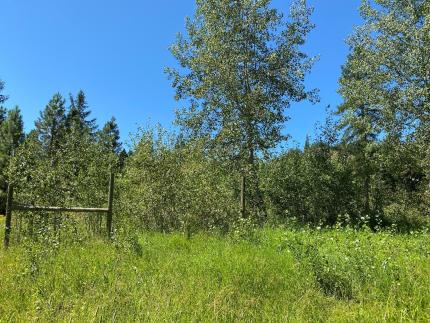
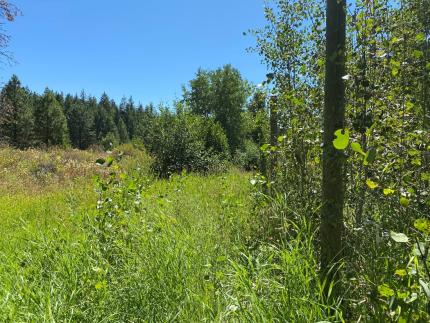
Oak Creek Wildlife Area Grazing Monitoring: Oak Creek Wildlife Area Manager Mackey and Assistant Manager Charlet completed cattle grazing monitoring surveys for one lease in the Rock Creek Unit and two allotments in the Cowiche Unit of the Oak Creek Wildlife Area. All three survey locations showed cattle grazing was within the range of expectations and permit requirements.
Sunnyside/Snake River Wetland Management: Sunnyside Snake River Wildlife Area Manager Kaelber and Assistant Manager Jahns have begun the process of prepping the Windmill Ranch wetlands for fall reflooding. The Phase 1 wetland was mowed and sprayed to treat noxious weeds and reduce the cover of aquatic vegetation that was reducing open water. The wetland was then seeded with buckwheat to provide forage for migratory waterfowl.
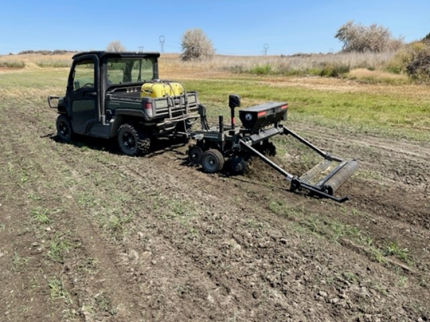
Conducting Business Operations and Policy
Oak Creek PR Reports: Oak Creek Wildlife Area Manager Mackey and Assistant Manager Charlet completed the United States Fish and Wildlife Service annual performance (PR) report. This report includes all planned and completed activities on the wildlife area that were funded by PR contract funding from July 2022 to June 2023.
Other
Region 3 Awards Ceremony: The entire L.T. Murray team attended the 2023 Region 3 awards ceremony. The meeting was informative and just a good time with a wildlife area highlight of Amy Windrope and Wildlife Area Manager Morrison emerging victorious in the cornhole tournament.
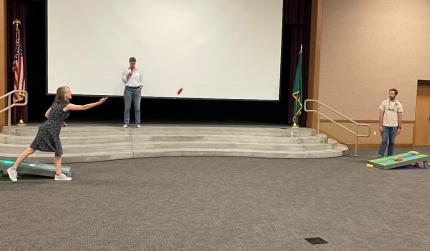
Wenas Wildlife Area Temporary Cattle Crossing: Earlier this spring, Wildlife Area Manager Hughes worked with a neighboring landowner on issuing a temporary cattle crossing permit on the Wenas Wildlife Area. The crossing went from Bull Pasture out through Hessler Flats. The lessee was allowed to cross cattle in one day within a designated timeframe of late spring and early fall/summer. Each crossing allowed has occurred and there were no issues with the permit. The lessee worked with Hughes on keeping her up to date when he wanted to cross cattle and the two crossings went well. The permit was beneficial for building and supporting relationships throughout the community. Hughes is looking forward to working with the permittee in future years.
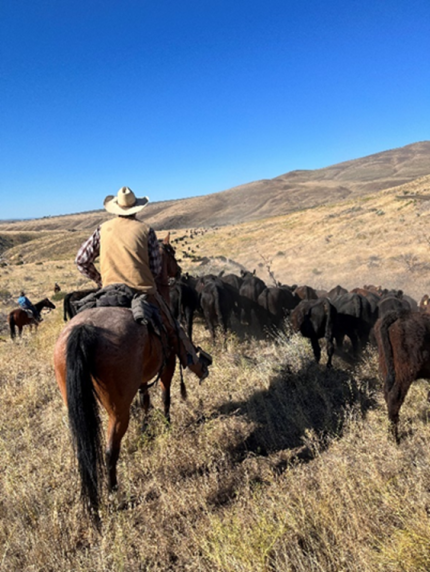
Wenas Wildlife Area Gates: Wenas Wildlife Area Natural Resource Technicians Stoltenow and Janes completed fabrication of three gates to be hung around the wildlife area. One gate was installed at the entrance to Hessler Flats and one was installed near Newlands Road. The final gate will be installed at the entrance to the Mellotte office.
Pasco Parking Lot Repair: District 4 staff members worked together to fill in a trench and potholes in the Pasco office parking lot with gravel. The tilt trailer worked great to haul and spread gravel!
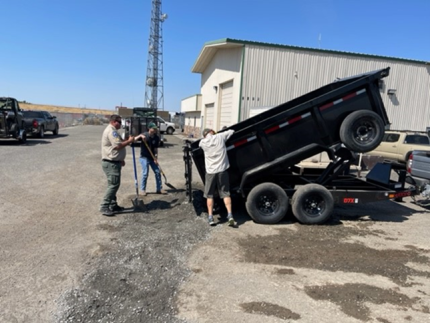
Region 3 Graffiti Increase: Access Manager Garcia and Natural Resource Worker Wolff have been dealing with an increase in vandalism and graffiti through out the region.
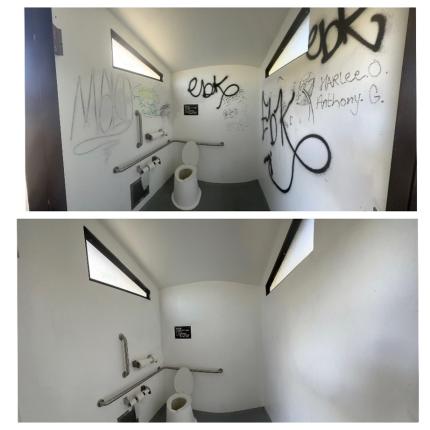
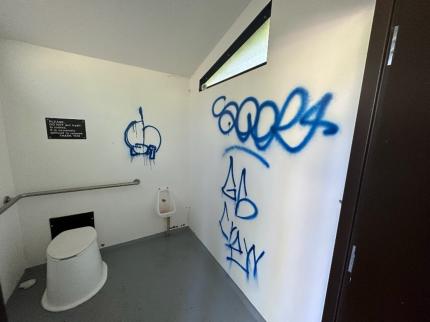
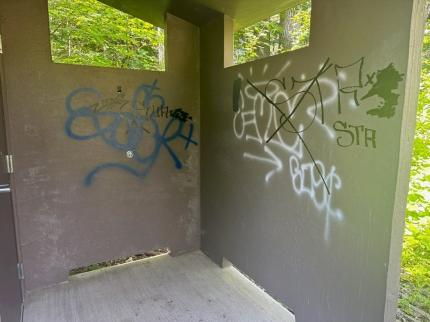
Matoon Lake Graffiti: Access Manager Garcia and Natural Resource Worker Wolff used a sand blaster to remove graffiti from inside and outside outhouse walls.
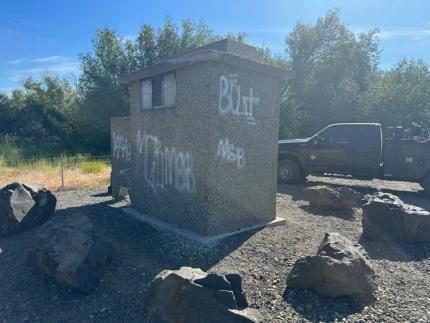
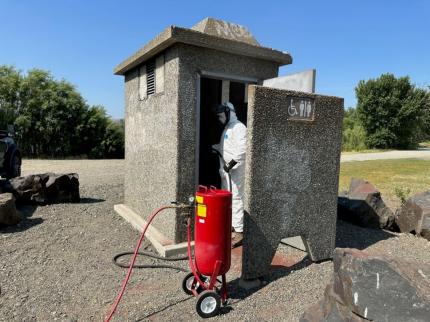
Teanaway Tree Removal: Access Manager Garcia removed a fallen tree at Teanaway Junction.
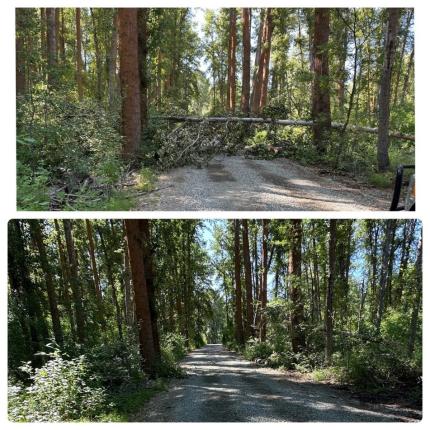
Managing Wildlife Populations
Band-tailed Pigeon Surveys: Region 4 biologists conducted annual band-tailed pigeon surveys at select mineral sites from July 10 to July 20. These surveys are essential and influence the annual season and bag-limit frameworks for band-tailed pigeons.
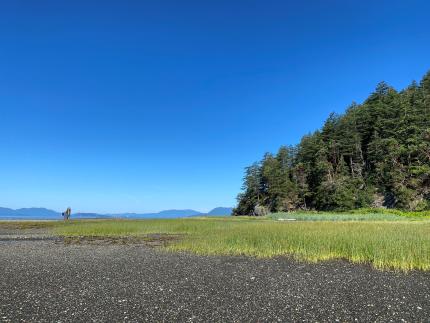
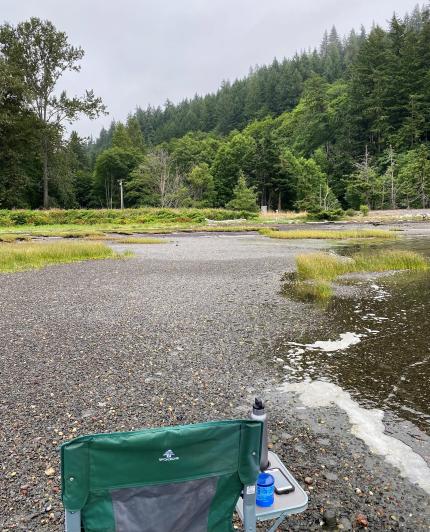
North American Bat Monitoring Program Detector Deployments: Region 4 Wildlife staff members deployed overnight bat detectors at multiple sites throughout the region as a part of the North American Bat Monitoring Program. This is an ongoing continent-wide effort to monitor bat distribution and population trends.
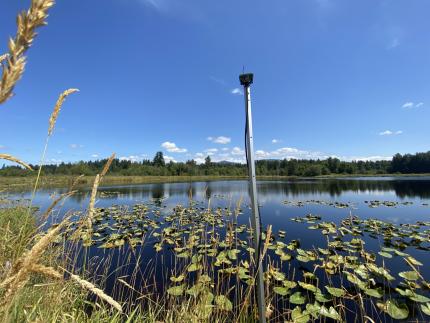
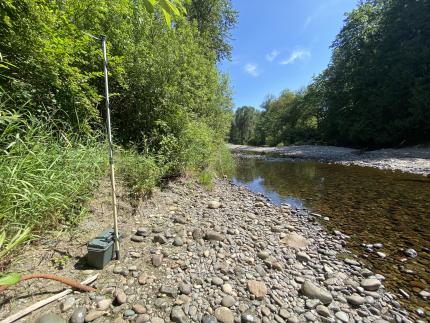
White Nose Syndrome Treatment of Bat Maternity Colony: District 13 Wildlife Biologist Licence collaborated with the Diversity division, U. S. Geological Survey researchers, Snohomish County Public Works staff members, U. S. Fish and Wildlife Service biologists, private landowners, and volunteers to capture, measure, mark, and provide an oral white nose syndrome (WNS) vaccine to a mixed colony (predominantly Yuma Myotis) of bats in the Everett area. Over 100 bats were captured and treated and will be monitored by a solar powered pit tag reader system installed on the roost site to help determine efficacy of the treatment.
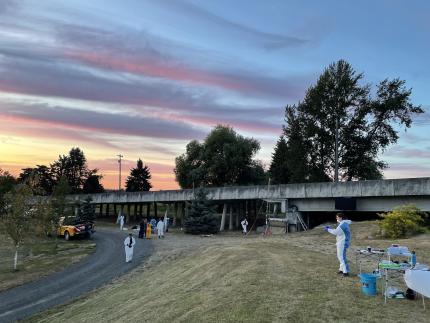
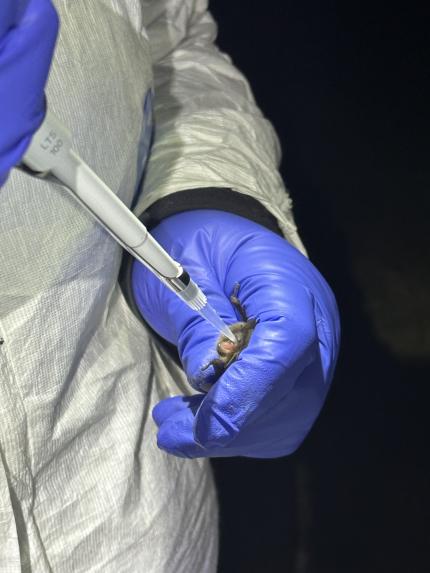
Lopez Island Bat Reconnaissance: District 13 Biologist Licence, joined by a Samish Indian Nation biologist, and a local non-profit research organization (KWIAHT) investigated bat roosts reported by partners and the public on Lopez Island. Information on bats on Lopez Island is limited and filling in these knowledge gaps are a priority for the district. Three new roosts for Townsend’s big-eared bats, big brown bats, and myotis species were documented on this visit. Additionally, guano was collected for myotis species identification.
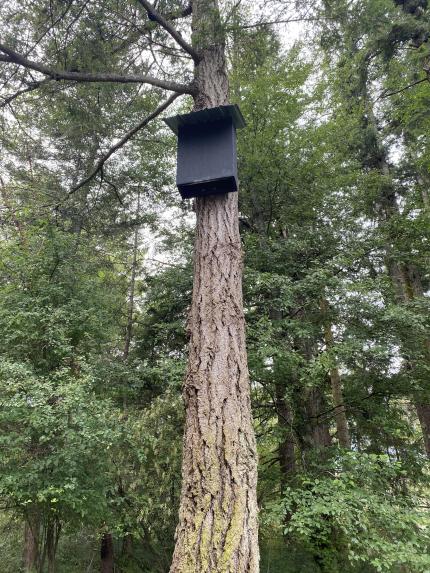
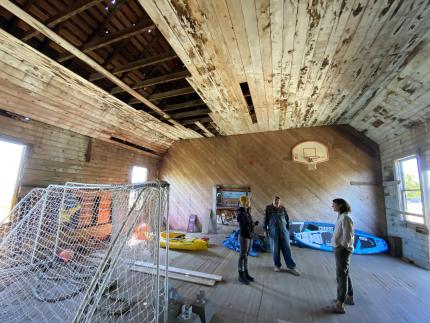
Bumble Bee Surveys in Snohomish County: District 13, with the help of Diversity staff members, completed two-point count surveys and two habitat surveys at Goat Flats on Three Fingers Mountain. These surveys are associated with Pacific Northwest Bumblebee Atlas and are an effort to monitor bumble bee distribution, population trends, and important pollinator habitat associations.
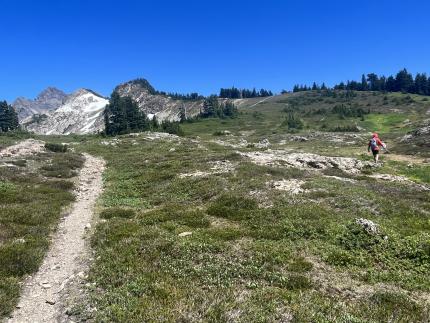
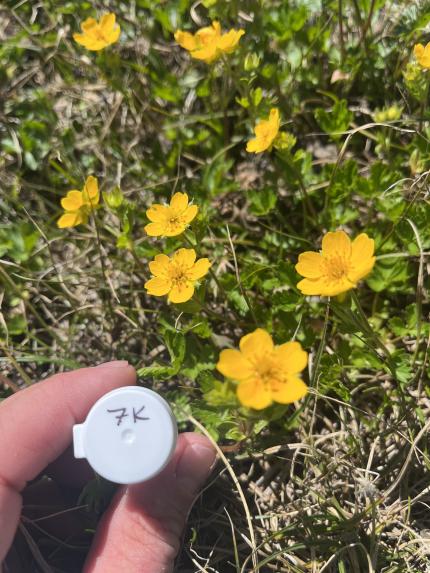
Mountain Goat Surveys: Districts 13 and 14 wildlife biologists conducted mountain goat surveys in the Darrington and Mt. Baker areas. These surveys are typically flown annually to derive population estimates and assist with management by WDFW and tribal co-managers.

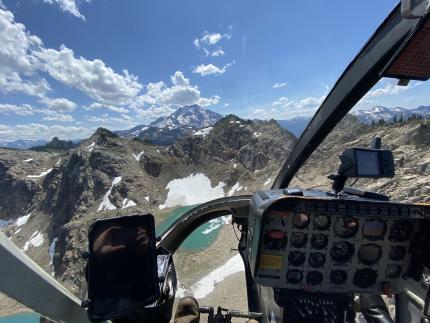
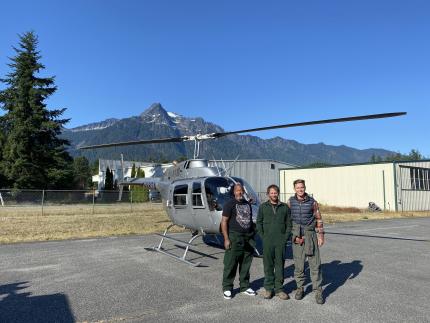
Fisher Surveys in King County: District 12, with the help of partners, took down cameras from monitoring stations targeting fishers. Learn more about WDFW efforts with fisher here.
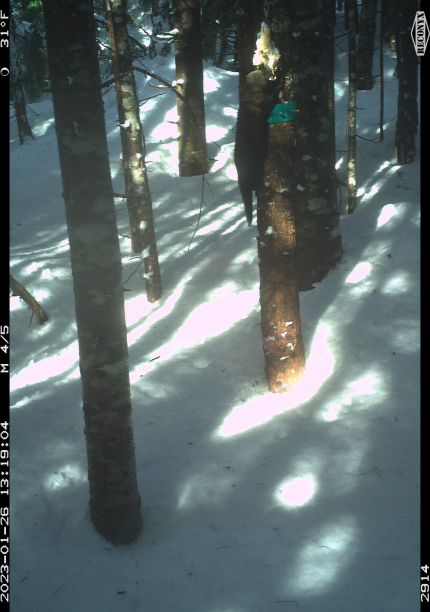
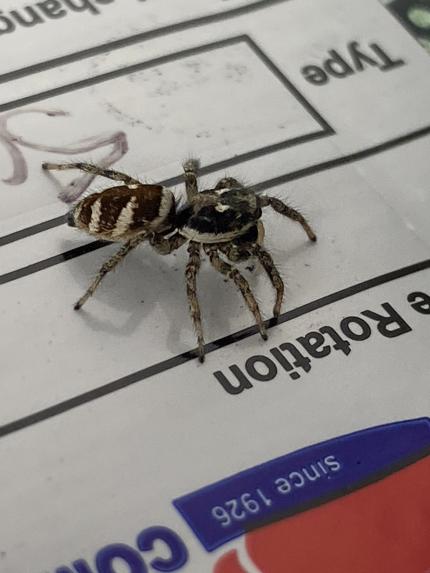
Common Loon Management Efforts: District 12 put up new outreach signage developed with Communications and Public Engagement (CAPE) staff members and printed by partners at Campbell Global Timber Company.
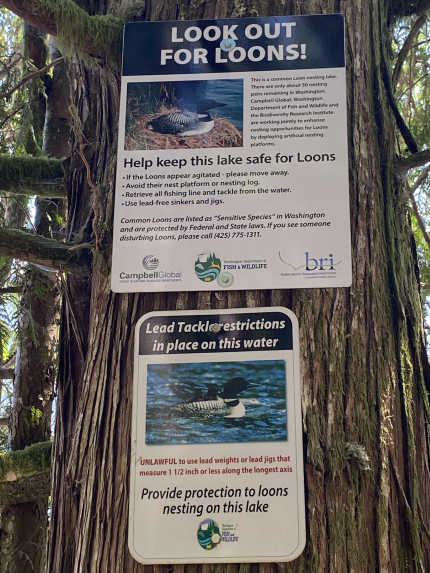
Providing Recreation Opportunities
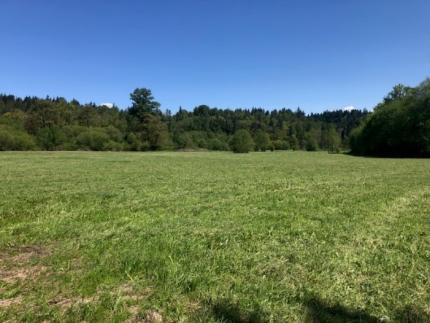
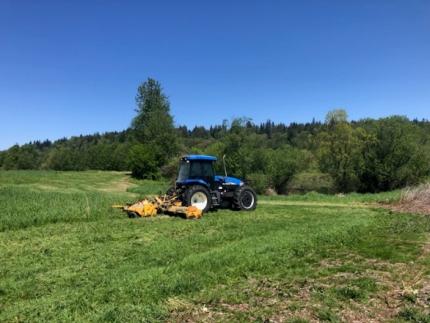
Fall Bear Hunt Opportunities: The Region 4 Private Lands Access Program team prepared a site in Whatcom County for public access during the month of August and early September for behind the gate vehicle access for bear hunters. This private timber land access opportunity relies on good behavior and rule compliance from the public. This bear hunting opportunity is accessed through the Hunt by Reservation system on WDFW’s website.
Summer Mowing: The Region 4 Private Lands Access Program team mowed several sites to reduce the prevalence of reed canary grass and make portions of properties better for waterfowl and waterfowl hunting.
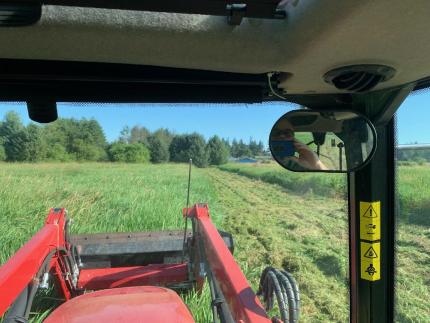
Providing Conflict Prevention and Education
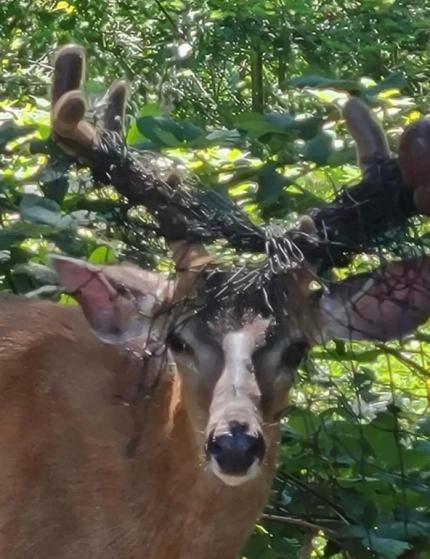
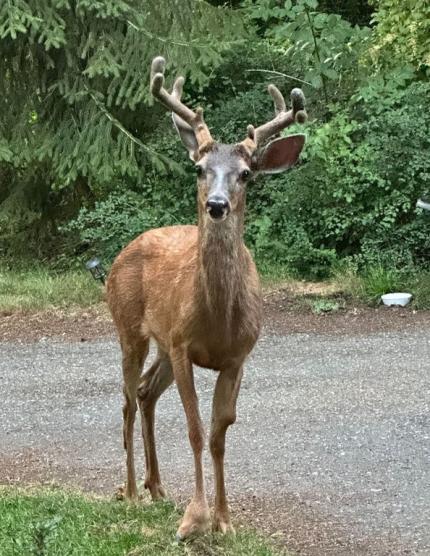
Assisting Deer in Distress: Local Conflict Specialist Seitz, Law Enforcement Officer Andrus, and Wildlife Biologist Moore responded to a report of a male deer in distress in Whatcom County. The buck’s antlers were entangled in heavy duty polyester garden netting which was limiting his ability to forage and move about naturally. The team immobilized the deer and removed the netting. Reports of the deer looking much happier have already been received from several residents.
Conducting Business Operations and Policy
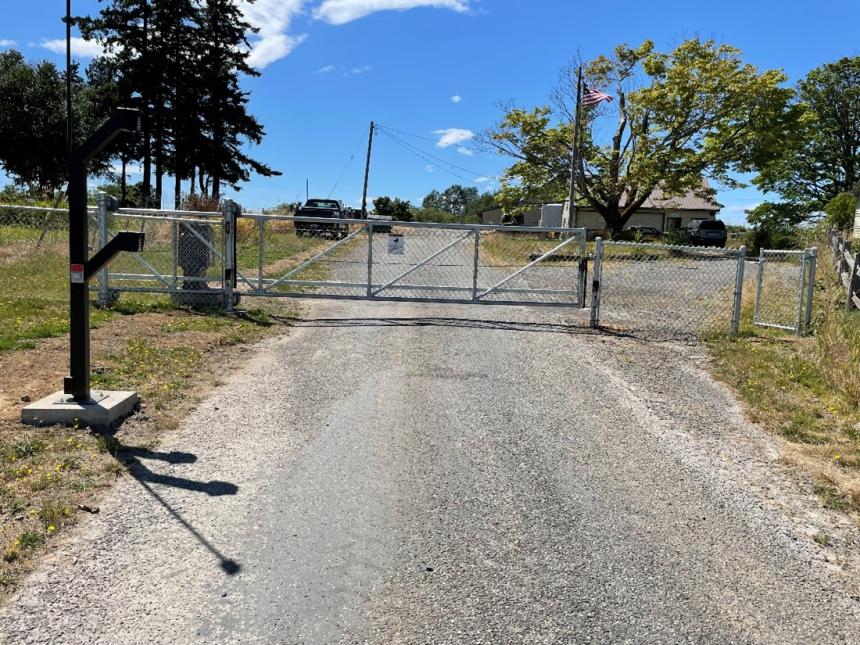
Managing Wildlife Populations
Annual Band-tailed Pigeon Surveys: This month, Biologists Wickhem, Bergh, Holman, and Stephens conducted their respective band-tailed pigeon surveys in Region 5 between July 10 and July 20. Additionally, Holman teamed with Region 6 Biologist Novack to survey a site in the estuary of the Chehalis that can only be accessed by boat. Nesting birds congregate at natural mineral springs throughout the summer to consume supplemental minerals, primarily sodium and calcium. The same mineral sites are surveyed each year by WDFW biologists across Western Washington and the results are combined with similar efforts in British Columbia, Oregon, and California to monitor the population at the flyway level. Survey results affect the season and bag-limits for band-tailed pigeons each year.
At the site in Clark County, Wickhem counted 119 pigeons which is relatively low for that site. After the survey, Wickhem checked the mineral spring which appeared to be low on water, likely thanks to the regions dry spring and hot early summer.
At the site in Skamania County, Bergh counted 286 pigeons which is about average.
At one of the Cowlitz County sites, Stephens counted 289 which is down from high counts in recent years but settling back into historic averages for that location.
At the other Cowlitz County site, Holman counted 93 which is lower than surveys of prior years, but continued forest growth makes seeing the birds and accurately counting them at this location a real challenge.
At the Lewis County site, Stephens counted 249 which is nearly identical to the 2022 survey.
At the Gray’s Harbor site, Holman and Novack counted 179, setting the baseline for this location.
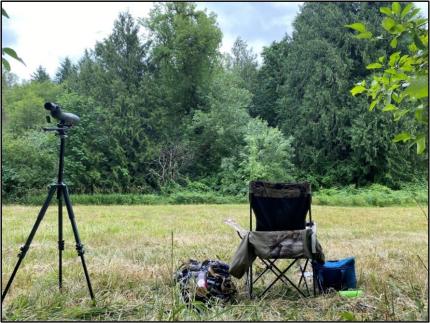
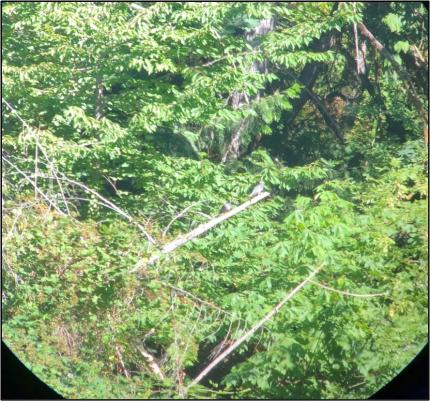
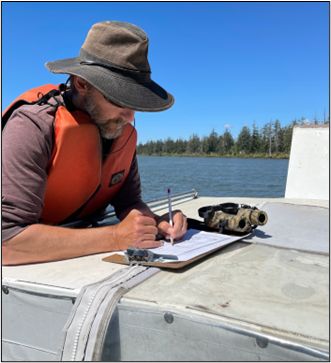
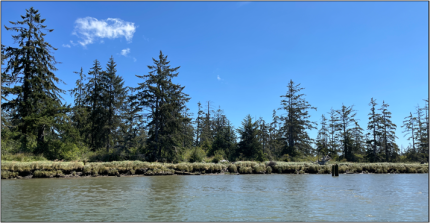
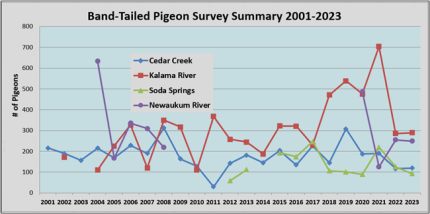
Bat Colony Emergence Counts: Biologist Wickhem conducted a bat colony emergence count at a site in Clark County with the help of Volunteers Flick, Hadley, Robinson, and Petrick. The colony is located on private property where the landowner has installed several bat boxes over the last 20+ years. Each observer counted “one-poles-worth” of bat boxes and houses and counted 978 total bats exiting the structures between 9:02 p.m. and 9:40 p.m. The individual structures contained 237, 227, 105, 190 and 215 exiting bats, respectively. After the bats finished exiting, the team members were able to peek inside a few of the boxes to see several bat pups that are not yet old enough to fly. The female bats will leave the bat houses to feed and return to nurse their pups until they are able to fly and catch their own food. The property has a healthy population of mosquitos, so there should be plenty of food for all 978 bats and their young for many months to come. Thank you to the volunteers for their expert counting and to the landowners for creating excellent bat roosting habitat and for continuing to let us work on their property!

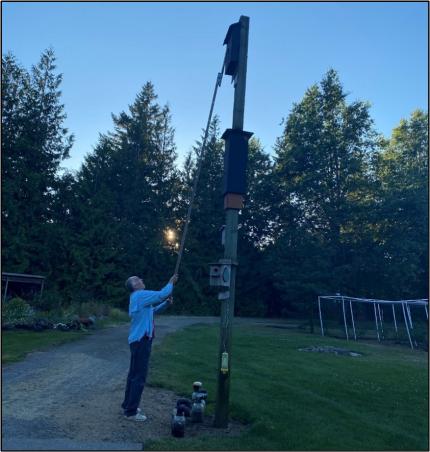
Biologists Stephens and Holman conducted concurrent emergence counts at two sites in Lewis County. Volunteer Salzer along with Customer Service Specialists Rainwaters and Kean joined in the effort as well. The Lewis County sites are both located on private property and the bats occupy various outbuildings. At one location, Stephens, Rainwaters, and Kean observed approximately 500 bats while Holman and Salzer got just over 100 at the other site. Additionally, Holman and Salzer were able to enter one of the buildings after the count and observe between 75 and 100 pups within the rafters. The two sites represent the only known locations of breeding by long-legged myotis. Thanks to the surveyors and the landowners who are collectively helping manage Washington’s bat populations.
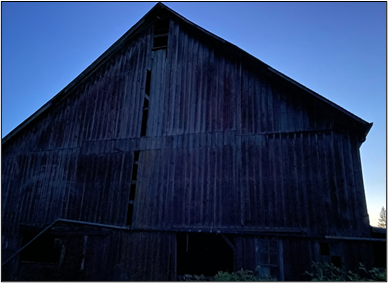
Bat Captures and White Nose Syndrome Vaccination Study: Biologist Wickhem, Bat Species Lead Tobin, Technician Leipold, and Volunteers Flick and Hadley joined volunteers and biologists from the US Geological Survey, US Fish and Wildlife Service, and Bats Northwest to capture bats on private property as part of a study to test a new vaccine for white-nose syndrome (WNS). WNS is a devastating disease caused by a fungus (Pseudogymnoascus destructans or Pd) that causes bats to repeatedly wake up during winter hibernation (which burns a lot of calories), and usually leads to death. WNS has led to massive bat die-offs in the midwest and eastern United States and either the disease or the Pd fungus have been detected within ten counties in Washington as of July 2023. More information on the vaccine study can be found here: https://www.usgs.gov/centers/nwhc/science/white-nose-syndrome-vaccine-update-and-research-host-protection-mechanisms?utm_source=Newsletter&utm_medium=Email&utm_campaign=national-wildlife-health-center-newsletter--summer-2023--&utm_term=Title
In this capture effort, bats were collected from funnel traps that were attached to the openings of occupied bat boxes. Once removed from the trap, a hair sample was collected and the bats were weighed, measured, sexed, aged, given a wing health score, a wing band, a PIT tag, either the vaccine or control (placebo) dose orally, and then released. The team also captured several bats that have been caught, marked, and treated in previous years. Since this effort took place at a maternity colony, most of the bats captured were lactating females. The crew did not catch any new pups (baby bats), meaning they are not able to fly on their own yet, and remain in the boxes at night. The capture team worked into the wee hours of the night and the next morning to finish processing over 100 bats. WNS has not been detected within this colony or anywhere nearby yet, but the group still abided by strict decontamination protocols that help prevent the human-spread of the fungus. Also, everyone that directly handled bats was up to date on their rabies vaccination. Thanks to our partners for an excellent trapping effort and the landowners for allowing us to work on their property and for assisting with set-up and take-down of our equipment!
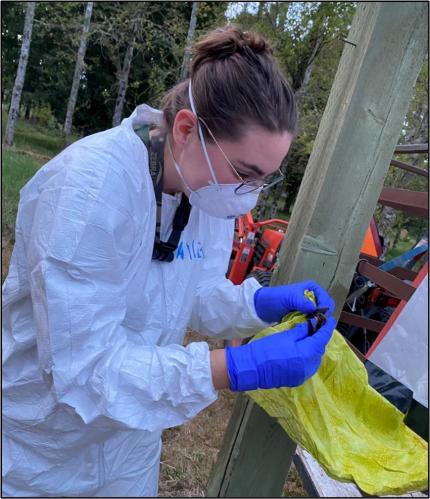
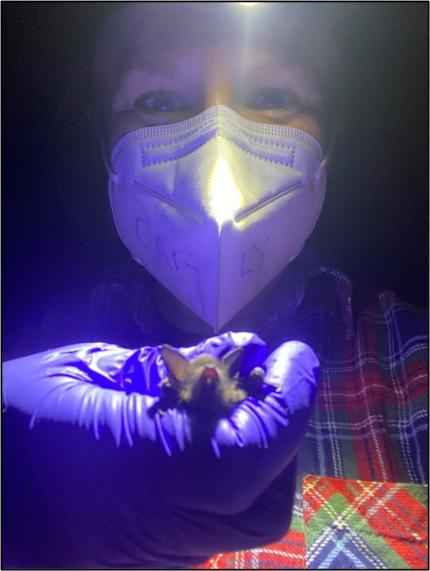
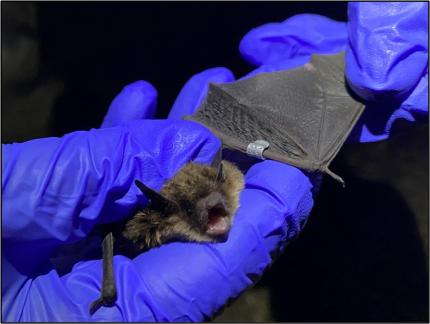
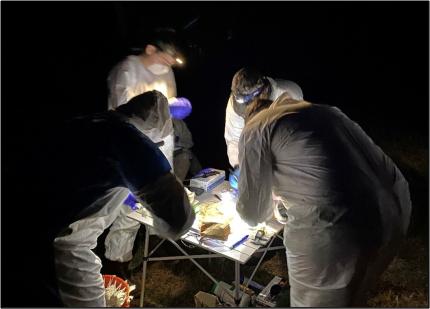
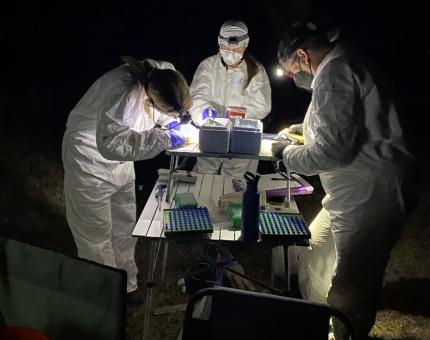
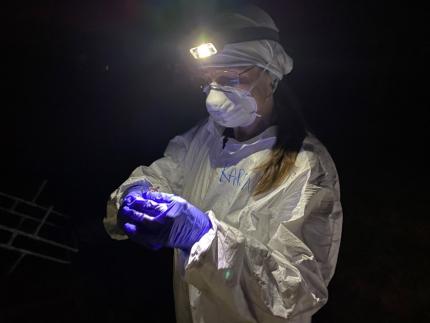
Bat Acoustic Monitoring: Biologists Stephens, Wickhem, and Holman conducted acoustic monitoring for bats at four sites in Region 5. This effort was part of the North American Bat Monitoring Program, a multi-national, multi-agency coordinated effort across North America. This collaborative bat monitoring program is made up of an extensive community of partners across the continent who use standardized protocols to gather data that allows assessment of population status and trends, informs responses to stressors, and sustains viable populations. For more information on the North American Bat Monitoring Program: North American Bat Monitoring Program | United States | Canada | NABat (nabatmonitoring.org)
To monitor the bats, an acoustic detector is left overnight at each site and records the echolocation signatures of each bat species within proximity to the detector. Thanks to Sierra Pacific Industries who allowed WDFW access to their lands for the purpose of conducting this work. Also, thanks to Sierra Pacific Wildlife Biologist Tweedy for helping with access, navigation, and deploying the equipment.
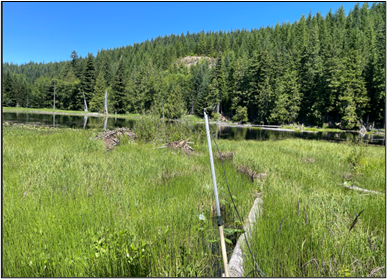
Providing Conflict Prevention and Education
District 9:
“Cougar” Sighting: Wildlife Conflict Specialist Jacobsen received a report of a cougar sighting along a popular trail in Vancouver. The reporting party sent photos of the animal to Jacobsen, who confirmed that the photos were of a domestic house cat. The size, coloration, and striped tail were very indicative of a house cat. The reporting party was not convinced and believed the cat to be a very large specimen.
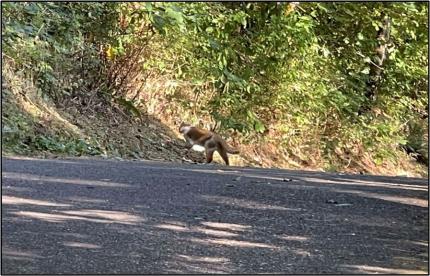
Deer Damage to Christmas Trees: Wildlife Conflict Specialist Jacobsen was contacted by a landowner who had been incurring damage to his Christmas tree farm from a handful of bucks over the past couple of years. Jacobsen and Conflict Technician Kolenberg met with the landowner and inspected the damage. A hazing plan was developed and Conflict Technician Kolenberg assisted with paintball hazing efforts over multiple days.
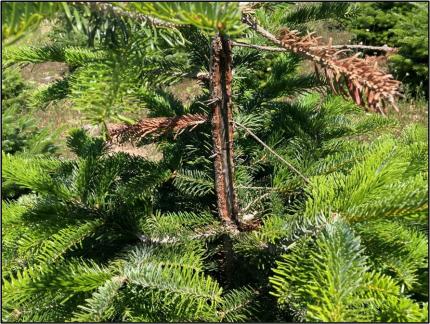
Bear Complaint: Wildlife Conflict Specialist Jacobsen fielded a complaint about a black bear near a residence after the homeowner caught the bear on their doorbell camera. Jacobsen provided advice on securing any attractants around the residence.
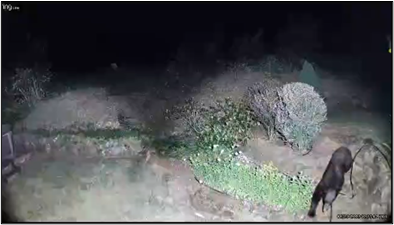
Bear in Blueberry Farm: A blueberry producer with a U-Pick blueberry farm contacted Wildlife Conflict Specialist Jacobsen regarding a bear that had been coming into his blueberry farm. The landowner was concerned about the safety of the berry pickers. This could be the same bear that visited the farm multiple times last year that WDFW was unsuccessful in trapping. Jacobsen requested that the landowner contact him promptly if the bear was observed again.
Bear in Garbage: A Klickitat County resident contacted Wildlife Conflict Specialist Jacobsen regarding a bear that had been accessing their garbage storage. The landowner kept their garbage in a semi-open shed until garbage day, then moved the garbage out to the curb every week. Unfortunately, a bear caught on to this routine and started visiting the shed. Some lightweight metal reinforcements that the landowners added to the shed did not slow the bear down. Jacobsen responded to the residence and quickly erected an electric fence around the storage shed for the landowners.
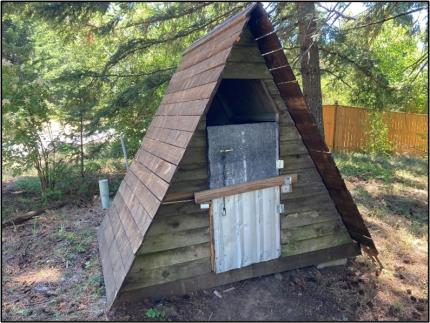

Sick/Injured Deer 1: A landowner contacted Wildlife Conflict Specialist Jacobsen regarding a sick deer in his yard. Based on the description of the deer and the fact that the deer was still mobile, Jacobsen and the landowner agreed to let the deer be to see if it could recover. The deer died the following day. Jacobsen assisted the landowner with the disposal of the carcass using his new headache-mounted winch. Further inspection of the deceased doe indicated that it died as a result of trauma incurred during fawning.
Sick/Injured Deer 2: A Goldendale landowner contacted Wildlife Conflict Specialist Jacobsen regarding a deceased buck in her yard. Officer Bolton had been contacted about the same deer the day before when he was a few blocks down the road and still mobile. The landowner was elderly and unable to dispose of the deer, so Jacobsen and Officer Nelson assisted in loading up and disposing of the deer.
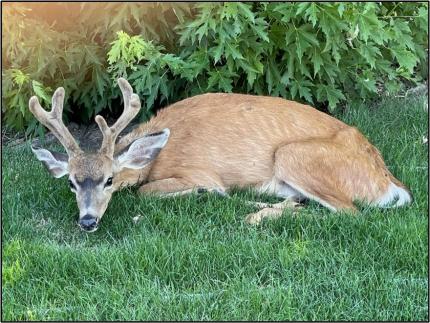
Sick/Injured Deer 3: Wildlife Conflict Specialist Jacobsen received a report of a deer with an injury to its front foot. The reporting party believed something was stuck on it, affecting the deer’s ability to walk. After inspecting the photos, Jacobsen confirmed that a foreign object was indeed wedged down on one of the deer’s hooves. Jacobsen will work with the reporting party to capture and assist the deer in the future, if possible.
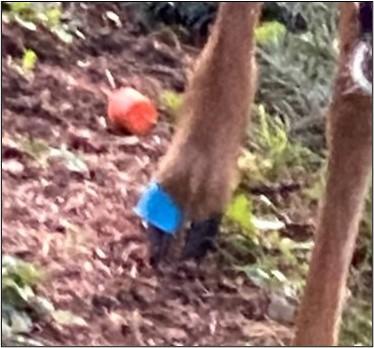
Sick/Injured Deer 4: Wildlife Conflict Specialist Jacobsen received a report of a sick deer in a residential yard that likely needed to be euthanized. When Jacobsen arrived, the deer was already deceased. Interestingly, the deer had an abscess on its front leg that, according to the landowner, had been there and growing steadily for the past ten years. Jacobsen disposed of the carcass.
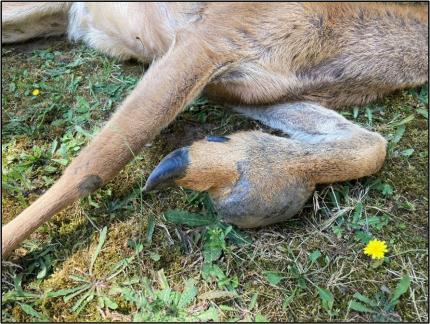
Sick/Injured Deer 5: Wildlife Conflict Specialist Jacobsen responded to a report of a fawn in a landowner’s front yard that appeared sick. Jacobsen inspected the deer and determined that the fawn was alive but was unresponsive and had labored breathing. Jacobsen euthanized the fawn.
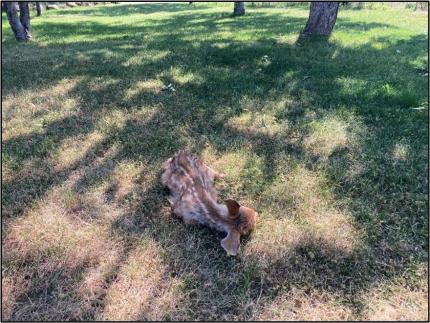
Elk Damage to Oats: Wildlife Conflict Specialist Jacobsen met with a landowner in Glenwood regarding elk damage to forage oats. Approximately 30-100 head of elk (depending on the day) visit the various oat fields daily and have caused extensive damage. Jacobsen discussed the use of drones for hazing elk with the landowner. Jacobsen also coordinated with multiple Master Hunters to provide evening, nighttime, and early morning hazing activities to help keep the elk at bay. Thank you to the Master Hunter volunteers for their time, efforts, and support!
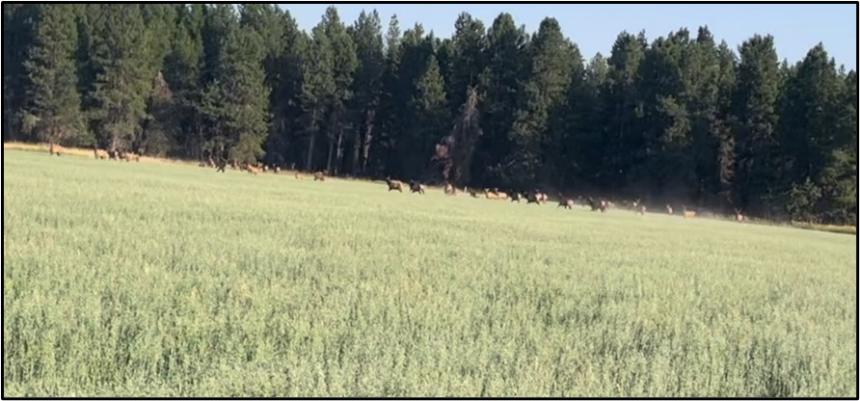
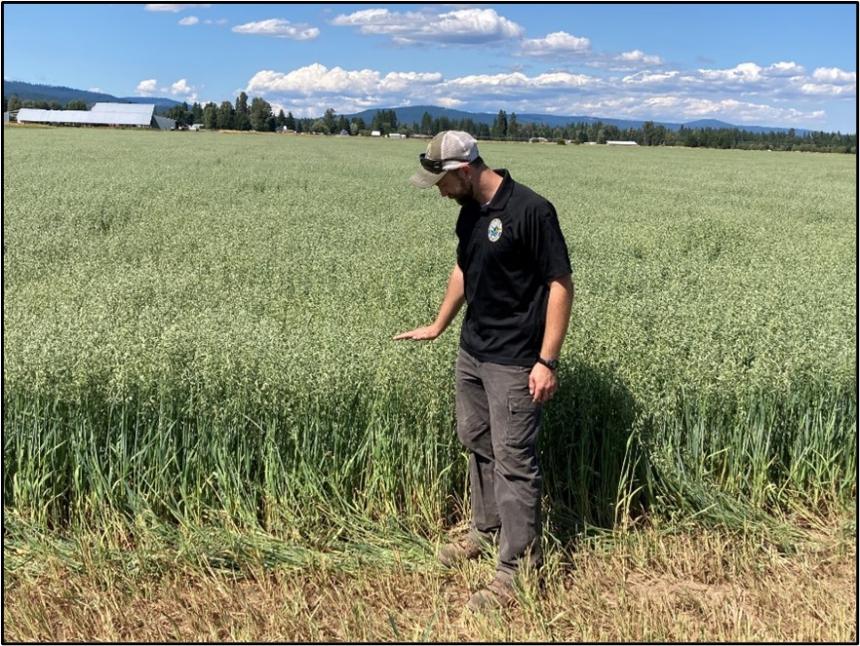
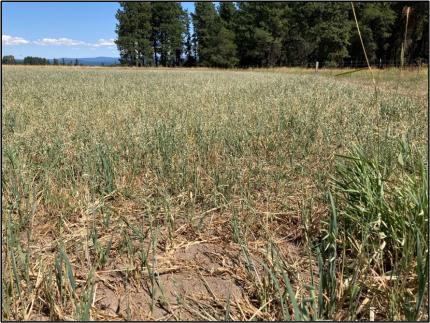
Tree Damage: Wildlife Conflict Specialist Jacobsen met with a landowner in Klickitat County who had been incurring damage to dozens of pine trees on his property from some rodent species. More investigation is necessary to determine if the damage was caused by porcupines or Western gray squirrels.
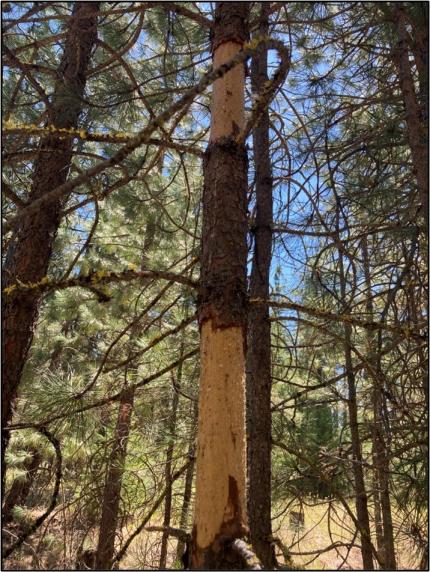
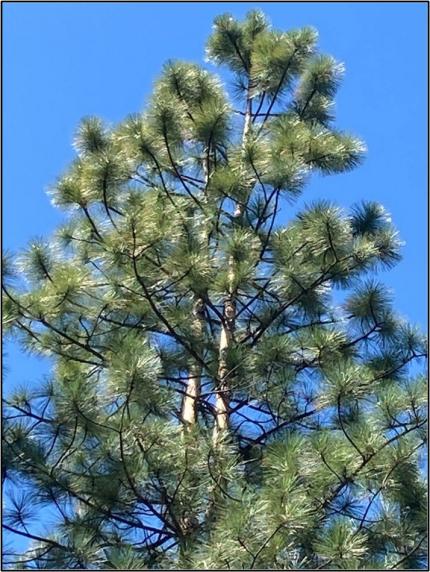
Depredation Investigation: Wildlife Conflict Specialist Jacobsen responded to a report of a depredation on a domestic sheep in Clark County. The producer waited several days to report the dead sheep to WDFW, so the carcass was heavily scavenged and partially decomposed when Jacobsen arrived to investigate. After completing the investigation, Jacobsen ruled the mortality as an “unconfirmed cause of death.” Several pieces of evidence were present at the scene which suggested that the sheep died of causes other than depredation by wildlife, but this could not be confirmed.
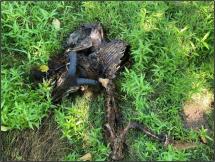
Conserving Natural Landscapes
Treating Noxious Weeds in Remote Areas. The Mt. St. Helens Wildlife Area is comprised of 18 different units, each one hosting a unique variety of invasive and noxious weeds. Wildlife area staff members spend much of the spring, summer, and fall traveling to the different units attempting to address and treat the weeds at the various units, but some get little to no attention due to their remote locations and an inability of staff to access them, until now... A new boat was acquired by the Mt. St. Helens Wildlife Area in June 2023. This boat will be immensely valuable in gaining access to units located in the Lewis and Columbia rivers, making it feasible for staff members to start tackling the weeds problems that exist there, as well as conduct regular monitoring and surveying of these sites. Manager Hauswald and Assistant Manager Risley have already visited the Nelson Unit once this summer and treated purple loosestrife.
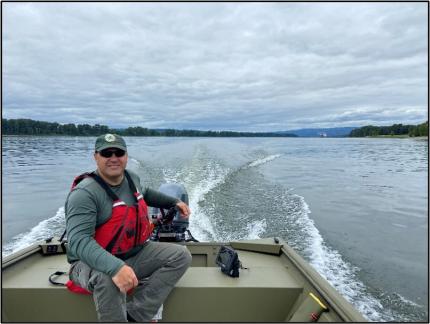
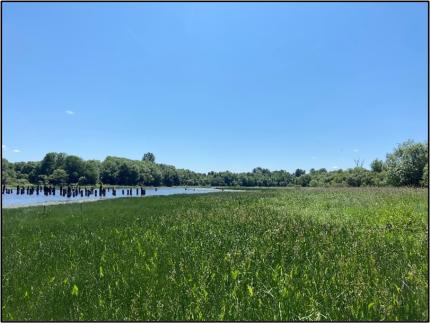
Technician Crane and Assistant Manager Risley got an early start and sprayed Scotch broom at the Mudflow Unit, covering approximately 200 acres by foot. The area traveled had been treated by Rocky Mountain Elk Foundation (RMEF) volunteers in 2022, but diligent survey of previously treated areas is necessary if the Scotch broom is to be kept suppressed. While treating the Scotch broom, this tansy ragwort was observed with several cinnabar moth caterpillars actively eating on the foliage. Tansy ragwort is another noxious weed present on the Mudflow and is particularly aggressive if left untreated. The cinnabar moth caterpillars are one of two biological control agents that are used in Washington State to control tansy ragwort. The help was much appreciated by wildlife area staff!
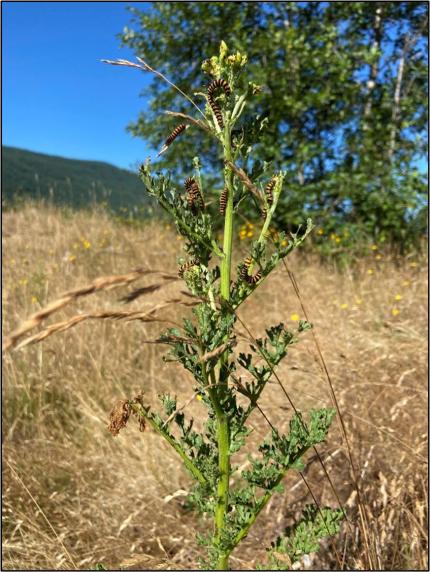
Providing Education and Outreach
Forest Youth Success Presentation: Wildlife Conflict Specialist Jacobsen and Captain Wickersham delivered a presentation to a group of youths involved in the Forest Youth Success Program regarding working in carnivore country. Forest Youth Success is a program run through the WSU Extension in Skamania County that employs young adults (ages 14-18) to assist with infrastructure and ecosystem management objectives on the south half of the Gifford Pinchot National Forest.
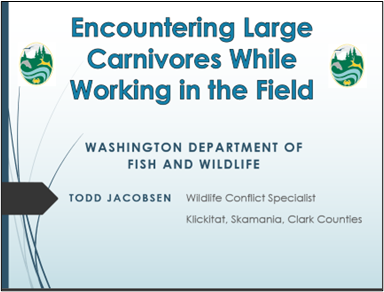
Underwood “Bear Aware” Presentation: Wildlife Conflict Specialist Jacobsen and Conflict Technician Kolenberg delivered a presentation to the community of Underwood in Skamania County regarding living with black bears. Roughly 30 people were in attendance.
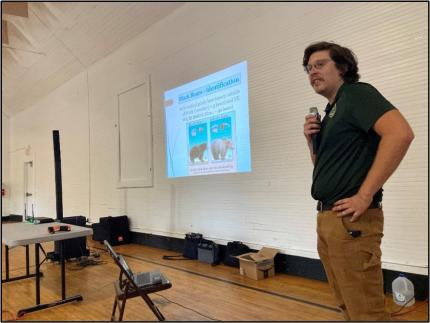
Other
New Region 5 Assistant Wildlife Program Manager: We are very happy to welcome Daren Hauswald as the new Region 5 Assistant Wildlife Program Manager! Daren will be based out of the Ridgefield office and will start in his new role on Aug. 16, 2023.
Daren has a Bachelor of Science degree in Biology and Environmental Science from Washington State University as well as completing several courses in Biology and Horticulture at Clark College. Daren has worked as the assistant manager (2006) and then the manager (2012) of the Mt. St. Helens and Shillapoo Wildlife Area Complex. His tenure at WDFW has been one of excellence as he has led his team and enhanced his wildlife areas with dedication and a very strong work ethic. Daren brings a comprehensive background to his new position and his extensive knowledge and experience will strongly benefit the Region 5 wildlife team. We look forward to partnering with Daren in his new role to provide leadership, support, and inspiration to our team. Daren enjoys the outdoors immensely whether its scaling Mt. St. Helens or spending early morning hours or late afternoons hunting and fishing. He is also a great cook and willingly shares the fruits of his harvest with his team.
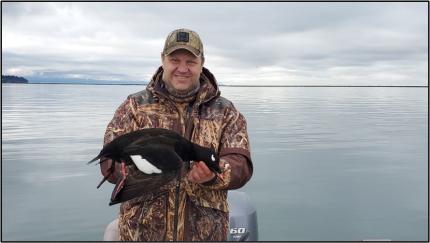
Managing Wildlife Populations
Bullfrog Management and Control: Biologists Tirhi and Butler participated in a half day workshop on invasive bullfrog control, removal, and management followed by an evening of training. Their learning included various bullfrog capture and euthanasia techniques and equipment training. District 11 strongly needs to increase their bullfrog management program considering the agency is working hard on listed Oregon spotted frog and Western pond turtle recovery. Both species are predated by non-native bullfrogs and bullfrogs are partially responsible for their demise. The training workshop was organized by the U. S. Fish and Wildlife Service Lacey office while the field capture and dissection training was hosted by Biologist Munes with the Billy Frank Jr. Wildlife Refuge.
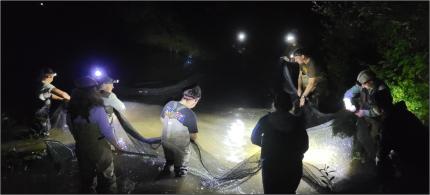
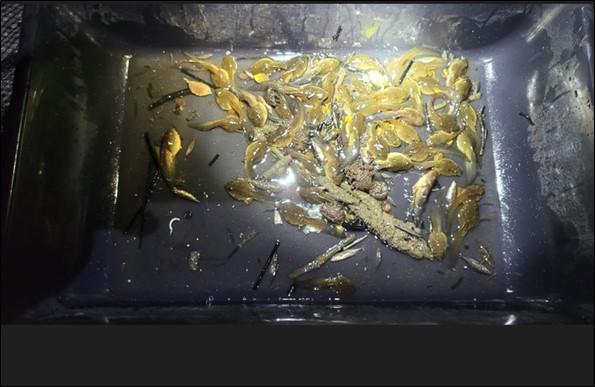
North American Bat Acoustic Monitoring: North American Bat Acoustic Monitoring (NABat) is a multi-national, multi-agency coordinated bat monitoring program across North America. Washington Department of Fish and Wildlife (Department) has been a participating agency in NABat across the state for several years. Several biologists in the Department participate and are assigned a 10-by-10 kilometer sample unit that remains consistent year to year. For one to two evenings per year, the biologists deploy an acoustic monitor capable of recording all bats by species and totals in each of the 5-by-5 quadrants of the unit. Biologists Butler and Tirhi completed their assigned NABat monitoring deployment in District 11. More information on the program can be found here.
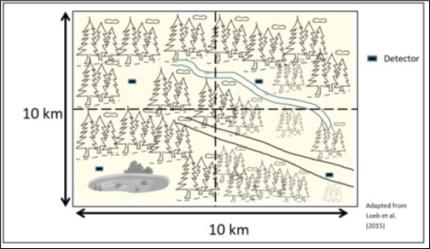
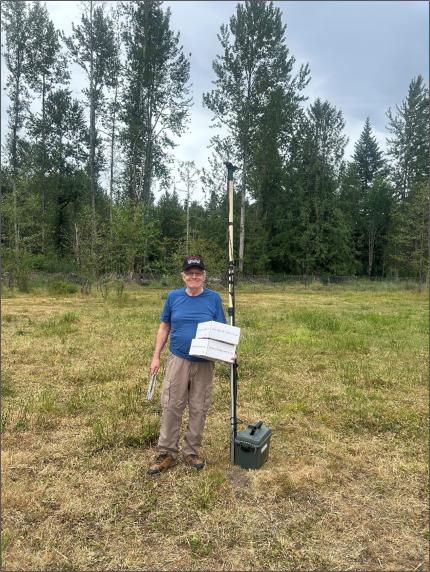
Western Pond Turtle: Biologist Tirhi and Technician Leopold spent a day at the Woodland Park Zoo processing hatchling pond turtles for the 2023 release to the wild. Pond turtles are a Washington State endangered species and the Woodland Park Zoo has partnered with WDFW for 32 years on the recovery of this important native species. Each year, WDFW brings pond turtle eggs from the Pierce County recovery site to the zoo to hatch and grow for one year. In late July, those hatchlings are weighed, measured, and specially marked in preparation for their release back to the wild (scheduled for August) where they will spend the rest of their lives aiding in the recovery of their population. Over 1,000 zoo visitors visited the event this year. 2023 marks the 32nd year of this Head Start program and one of the longest ongoing recovery programs at WDFW. Media story here.
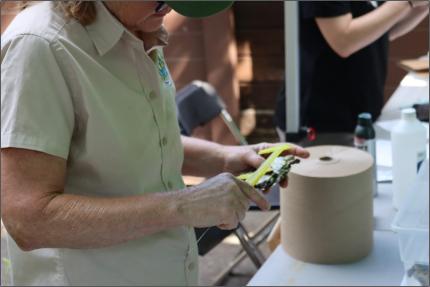
Fisher Monitoring: Biologists Tirhi and Butler along with Volunteers Terry and Cheney spent several days removing scented camera stations deployed in the fall of 2022 for fisher monitoring (Pekania pennanti). The monitoring is occurring across sections of the south Cascades where fishers were released in the past with one camera deployed per area. District 11 had deployed eight cameras. Tribal, city, state, and federal partners were deployed. Each station contains a camera tree positioned across from a tree containing a skunk lure dispenser, a beef bone, and a band for collecting hair samples. Tirhi and Butler have documented fishers in three of the four cameras checked so far and one wolverine! The other four cameras await check. Cameras took between 800-3,000 pictures each. All eight of the district deployed cameras were functional at retrieval and although bears and cougar (and other wildlife) had visited most, none had been destroyed or camera dislodged.
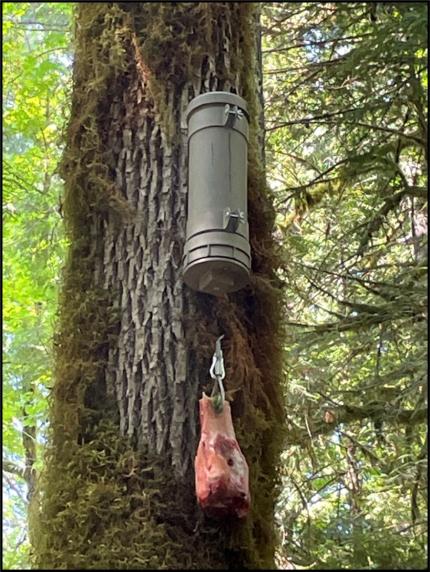
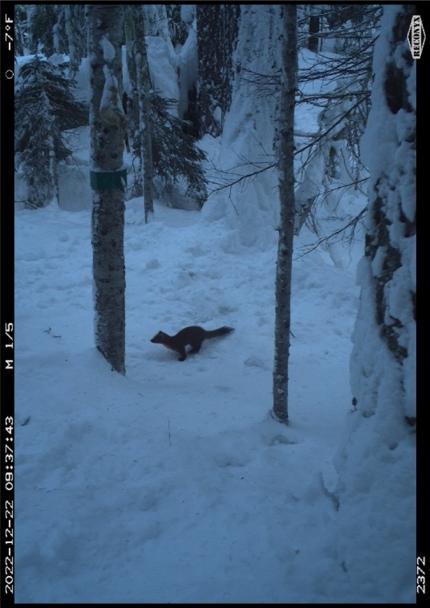
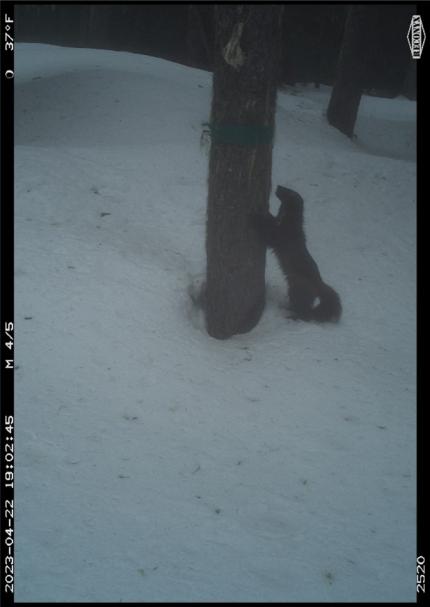
Bat Maternity Roost Monitoring: Biologists Butler and Tirhi organized a group effort to count bats at the Western State Hospital in Lakewood. This is an annual survey that involves a minimum of seven people to conduct. Staff members and volunteers stage themselves outside the various buildings and count bats as they emerge from their roost locations in the attics and crawl spaces of the hospital. Bats have occupied the attic spaces of these buildings for over 30 years. WDFW has partnered with Washington Department of Social and Health Services (DSHS), who runs the hospital, to separate the bats from the staff and patients and manage all facets of the colony occupation. Bats occupy three known roost locations from spring to summer and are comprised of females raising pups. There are likely other smaller unknown locations that non-breeding females and males use on the grounds. This year the count was down from approximately 500 in 2022 to approximately 250 this year. This could be due to observer error, changing flight patterns of the bats, or a true population decline. WDFW focuses on longer term trends rather than year-to-year declines. Regardless, the hospital is one of several colonies that WDFW is annually monitoring trends to determine whether White Nose Syndrome is affecting Washington’s bat colonies as it has on east coast populations. This year also featured a media event to showcase how DSHS and WDFW are working together to conserve bats and run a hospital including the replacement of one of the buildings housing a bat colony. WDFW appreciates the commitment of DSHS in helping conserve Washington’s valuable wildlife species.
Snowy Plovers: Biologist Cent checked on the last of the active plover nests. All known nests have now hatched or failed, though plovers are still in the area. Two nests at Midway were confirmed to have hatched a total of three chicks. All other nest fates were unknown.
Band-tailed Pigeon: Biologists Cent and Novack completed annual counts at known mineral sites. Grays Point, along the Columbia River, was surveyed for the first time with assistance from the Spartina Crew Member Mikkelsen and an airboat. District 10 Biologist Holman brought a boat from Region 5 to assist with the survey at the Cosmopolis site. Moclips mineral site had low numbers this year (45 birds), but Biologist Novack confirmed that some birds use the site further upriver and out of sight of the previous survey location.
| Site Name | Total |
| Cosmopolis | 187 |
| Grays Point | 36 |
| *Naselle | 22 |
| *Moclips | 45 |
Biologist Novack arranged visits to newly discovered mineral sites for confirmation from U. S. Fish and Wildlife Services (USFWS) Biologist Sanders. Waterfowl Section Biologist Hamer assisted with providing boat access to sites in the Willapa River and Clallam Bay. District 16 Biologists Ament and McMillan guided them to three sites within Clallam County.
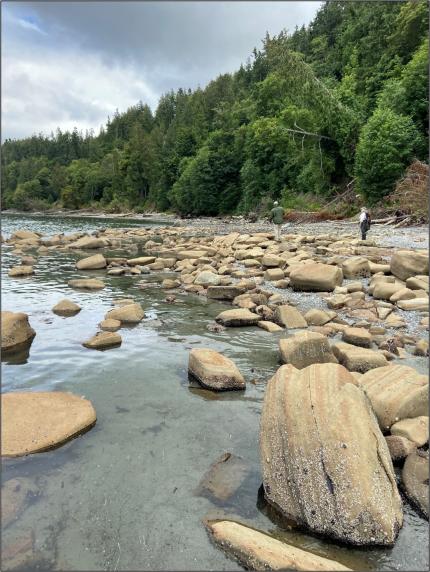
Mourning Doves: Biologist Cent began trapping at one of District 17’s mourning dove trapping sites. Ten birds have been trapped and banded since trapping began. The second site where trapping occurs each year has yet to have a significant number of doves show up, though the landowner continues to bait each day. Hopefully, trapping will begin at this second site in the next week or two.
Mariposa Copper Butterflies: Biologist Cent began collection of mariposa copper butterflies at North Bay Bog, a Department of Natural Resources property in Grays Harbor County. She is also scouting the Elk River Unit, which is a site which once had wild cranberry bogs, the habitat of mariposa copper butterflies, to determine if the wildlife area is home to any coppers.
Black River Elk Capture: Biologists Novack and Cent attempted to capture and collar a cow elk at the USFWS Black River site near Littlerock with assistance by USFWS Manager Nakai and the Nisqually Refuge biologist. The objective is to track the movements of these elk that are in close proximity to I-5 and create conflicts with private landowners. A group of 43 elk were found in the open fields and Biologist Novack was able to get into range for placing a tranquilizer dart. Unfortunately, almost every adult cow appeared to be afflicted with Treponeme-associated hoof disease and were not suitable candidates for placement of a telemetry collar. Another effort will occur in winter when migratory elk come to the property that will likely have some healthy elk.
Western Pond Turtle: Biologist Murphie deployed two artificial basking structures at the Western pond turtle recovery site in District 15. A PIT tag (passive integrated transponder) antenna array was also placed at the pond and fitted to one of the platforms. Trail cameras were placed to collect images of turtles using the platform. Over 300 turtles were released in this pond from 2005-2013. All the turtles released are uniquely marked and have PIT implant. The objective of this new effort is to see if the PIT tag antenna array can identify remaining turtles released into the pond. Secondarily, we are looking for turtles that are unmarked and potentially new recruits hatched at the pond. Biologist Murphie has counted 36 turtles basking at various locations around the pond, but so far it doesn’t appear like they are using the platforms. Stay tuned, as adjustments to antenna placement and number of antennas deployed are made.
Bear Hair-Snare Project: Biologist Murphie along with carnivore section and regional staff set up 36 stations in GMU 636 to collect hair samples from bears from May through July. If successful, the project will provide an estimate of bears in GMU 636. Biologist Murphie reports collecting 744 samples (a sample can be an individual hair or a cluster of many hairs) at the conclusion of the sampling phase. On camera, visitors included turkey vulture, deer, squirrel, bobcat, cougar, spotted skunk, grouse, unidentified weasel, raccoon, and bears. More to come, as analysis from this project is completed over the next few months.
Bat Counts: Biologist Murphie participated in bat counts organized by U. S. Forest Service (USFS) biologists at the Snider Work Center and the Intorem Cabin on the Duckabush.
Band-tailed Pigeon Mineral Site Counts: Biologist Murphie conducted counts of band-tailed pigeon at two mineral sites in District 15. He reports count totals were at or below previous years. Additional analysis will generate the final index for these sites.
Providing Recreation Opportunities
Band-tailed Pigeon: Biologist Tirhi conducted the annual band-tail pigeon survey of the Mud Bay mineral site. Tirhi counted 220 band-tails using the site this year compared to 239 in 2022 and 263 in 2021.
Hunting Prospects and Status and Trend Reports: Biologist Murphie completed a first draft of the 2023 District 15 Hunting Prospects. He also completed the first draft of the Olympic goat status and trend report and started the Olympic deer status and trend report. Other data work associated with these write-ups was also completed.
Pierce County, American Lake: Region 6 water access staff have been working around the influx of users at water access areas. While vegetation control is a large part of access staff regular duties, these projects are often difficult to accomplish due to the hazards of navigating around vehicles and pedestrians. The other main consumer of time during the summer season is litter collection. Usually, a handful of water access areas will contribute to 90 percent of the litter collected throughout any county. In recent weeks, the recreational activity and litter collection at American Lake Access Area has been above and beyond the normal seasonal increase. The past three weeks of routine maintenance visits has accumulated over 1100 pounds of litter collected. The most recent visit consisted of 600 pounds and over seven hours logged for collection and disposal. The previous maintenance visit, just one week before, tallied 280 pounds of litter collected. Access staff and Enforcement are looking for ways to help improve this ongoing issue.
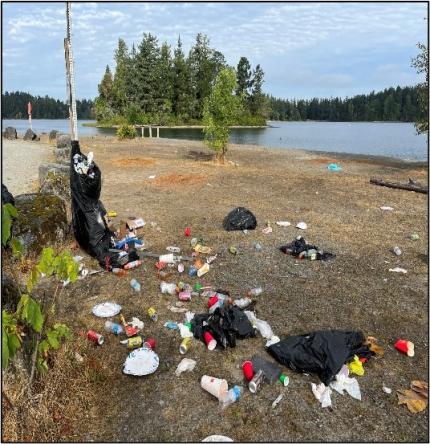
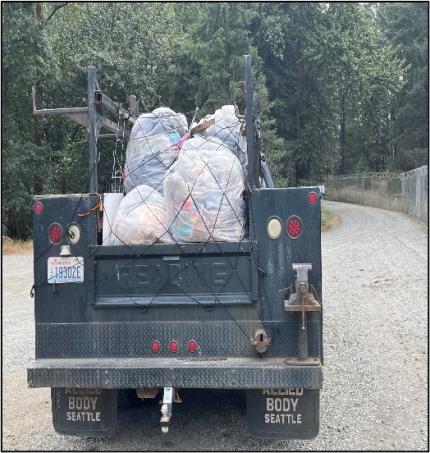
Grays Harbor County, Black Creek and South Montesano: Region 6 water access staff members worked with Washington Conservation Corp (WCC) crew on expanding the monofilament recycling programs collection bins. This recycling program has proven successful with collections bins at WDFW access areas in Kitsap, Mason, Pierce, and Thurston counties. The collaboration of the water access team and WCC has been favorable to both programs. They have increased recycling efforts and planed an expansion at other water access areas in the remaining Region 6 counties starting in Grays Harbor. Recycling bins were installed at four access areas: Black Creek, South Montesano, Double Bridges and Fuller Bridge. Plans to install additional bins in Grays Harbor, Clallam, Jefferson, Pacific counties will continue in the weeks to come.
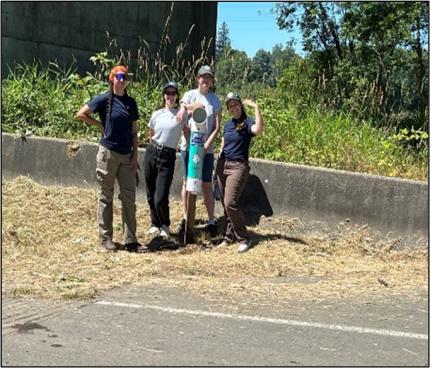
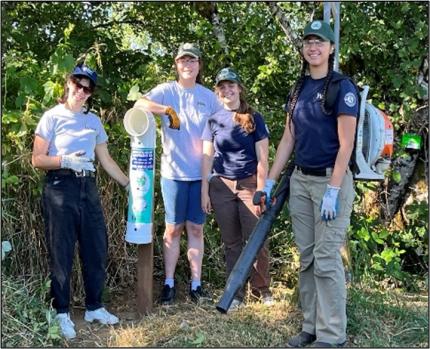
Kapowsin Lake: Region 6 access team prepared and arranged for new striping, directional arrows, ADA parking, walkways, and speedbumps at Kapowsin Lake. The previous striping was no longer visible, and the parking structure was all but lost. These improvements should help users navigate the parking areas much easier and once again have areas designated for those with disabilities. This is part of a larger effort by the water access crew to steadily bring this access to better overall condition. A pattern of misuse, vandalism, and vegetation overgrowth had this site in poor condition.
Conserving Natural Landscapes
Rat Island: Wildlife Area Manager Laushman and Biologist Norris put up signage at the Marrowstone Unit of North Olympic Wildlife Area to close Rat Island due to an outbreak of avian influenza.
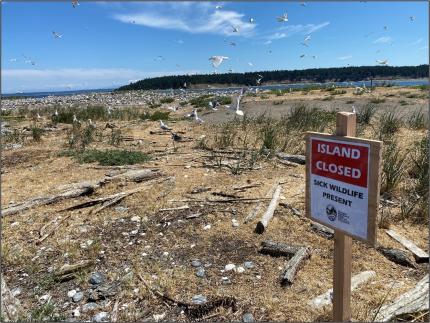
Group efforts from the Wildlife Program have helped reduce the viral load of avian influenza at the Marrowstone Unit of North Olympic Wildlife Area. The main part of the unit is closed due to an outbreak of avian influenza in Caspian terns. Biologist Ament, Water Access Team Members McKinlay and Walker, Wildlife Area Manager Laushman, Wildlife Veterinarian Haman, Technician Norris, and Safety Manager Mundy traveled to the island to remove tern carcasses and assess the colony.
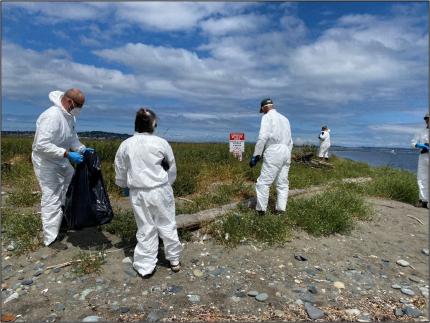
South Puget Sound: A new gate was installed for the South Puget Sound Wildlife Area in Lakewood to reduce trespassing.
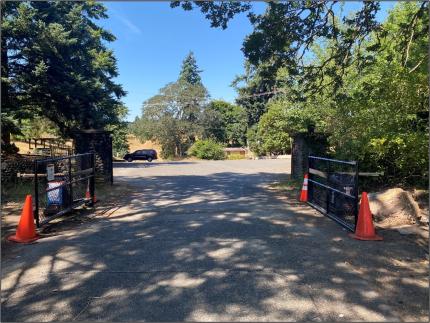
Chehalis Unit Acquisition: Biologist Novack provided some information to Real Estate in preparation for the upcoming Commission meeting when a 40-acre acquisition will be proposed.
Union River: Wildlife Area Manager Laushman, Habitat Engineer Lockwood, Habitat Restoration Coordinator Waldbillig, and Grants Manager Weller conducted a tour of the Theler Wetlands, adjacent to the Union River Wildlife Area Unit to discuss future restoration ideas with partners at the U. S. Fish and Wildlife Service and the Hood Canal Salmon Enhancement Group.
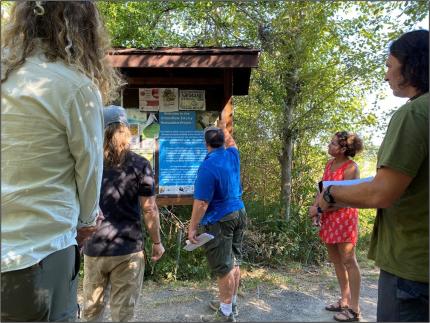
Bell Creek: Wildlife Area Manager Laushman, Assistant Regional Wildlife Program Manager Blankenship, and Assistant Lands Division Manager Lowery met with long-time volunteers and partners with the Department of Natural Resources and other local groups at the Bell Creek Unit, part of the North Olympic Wildlife Area. The group met to discuss next steps for the oak woodland restoration project that has been on-going at the unit for over 20 years, thanks to dedicated volunteer support.
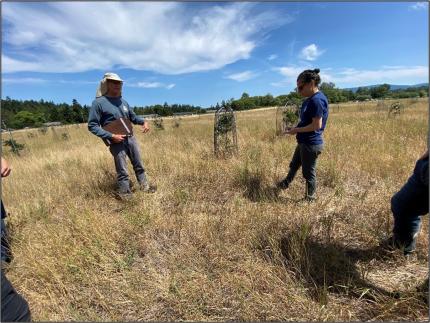
Skokomish: Wildlife Area Manager Laushman cleaned up trash at the Skokomish Unit and refreshed signage.
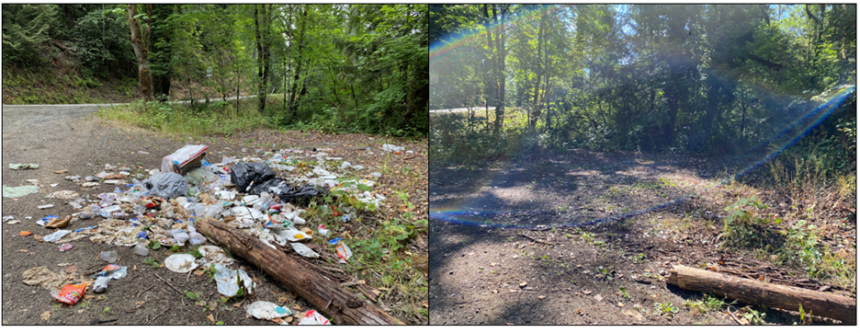
Providing Education and Outreach
General Wildlife Inquiries: Biologist Murphie responded to inquiries received by phone, email, and in person related to deer, rabbit, bear, and a bat.
Conducting Business Operations and Policy
Aircraft Safety Course Instruction: Biologist Murphie conducted a basic aircraft class in Montesano during the review period. The next one is scheduled for August.
Chemical Immobilization: Biologist Murphie conducted final turn-in and destruction of expired immobilizing drugs for the District 15 station, as the station is being closed. Associated paperwork has been completed.
Meetings Attended: Biologist Murphie participated either in-person or online in meetings discussing cougar, sooty grouse surveys, deer surveys, and the Avian Influenza outbreak on Rat Island.
Other
Drug Coordination: Biologist Novack conducted administrative duties relating to chemical immobilization drugs. He supplied Enforcement with chemical immobilization drugs and destroyed excess drugs that were past their expiration. Inventories and logs have been updated.